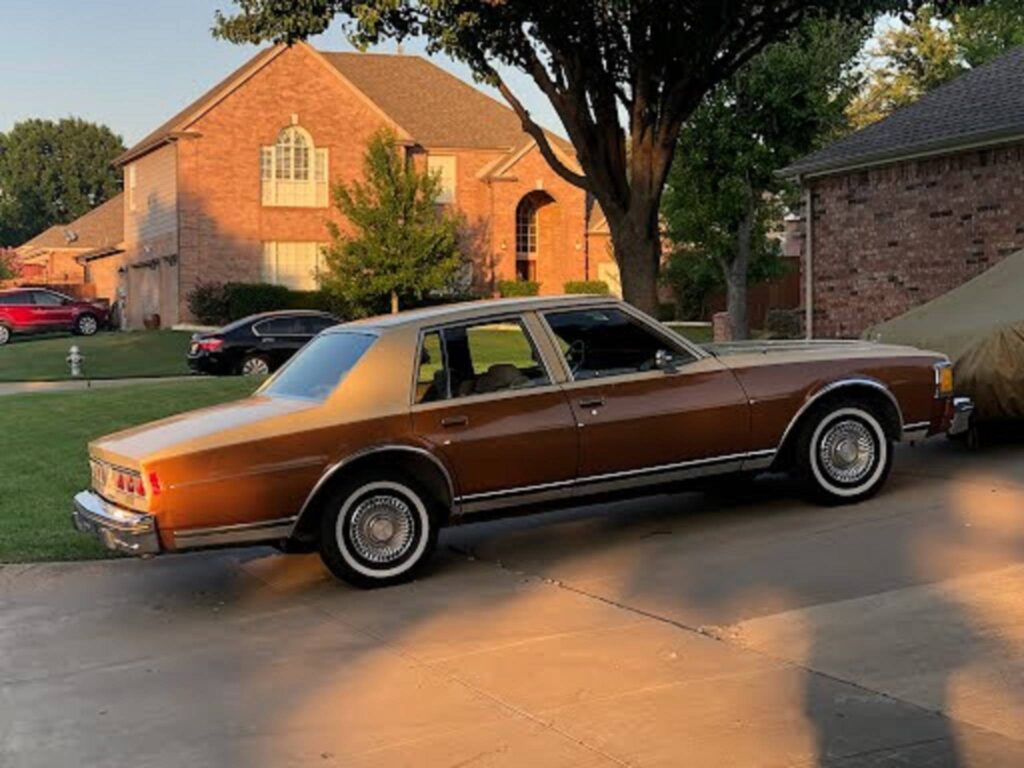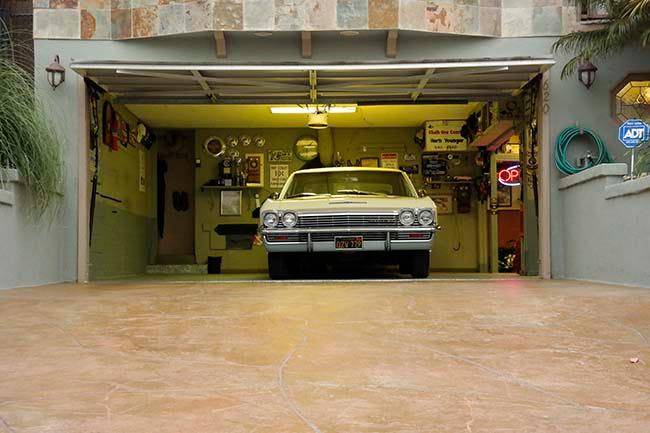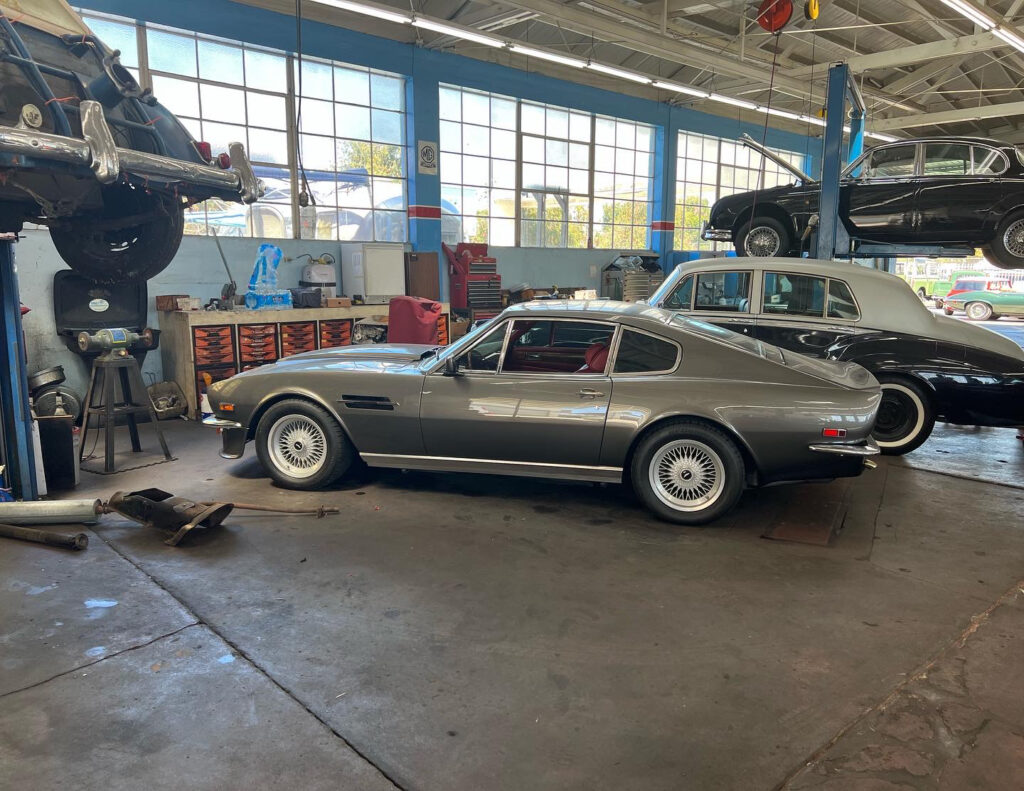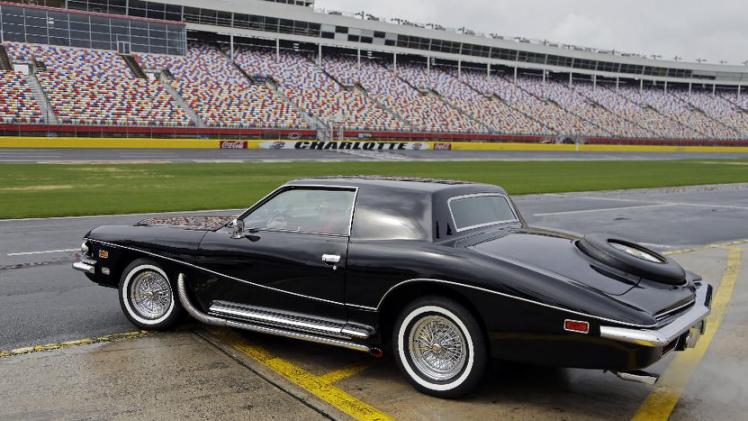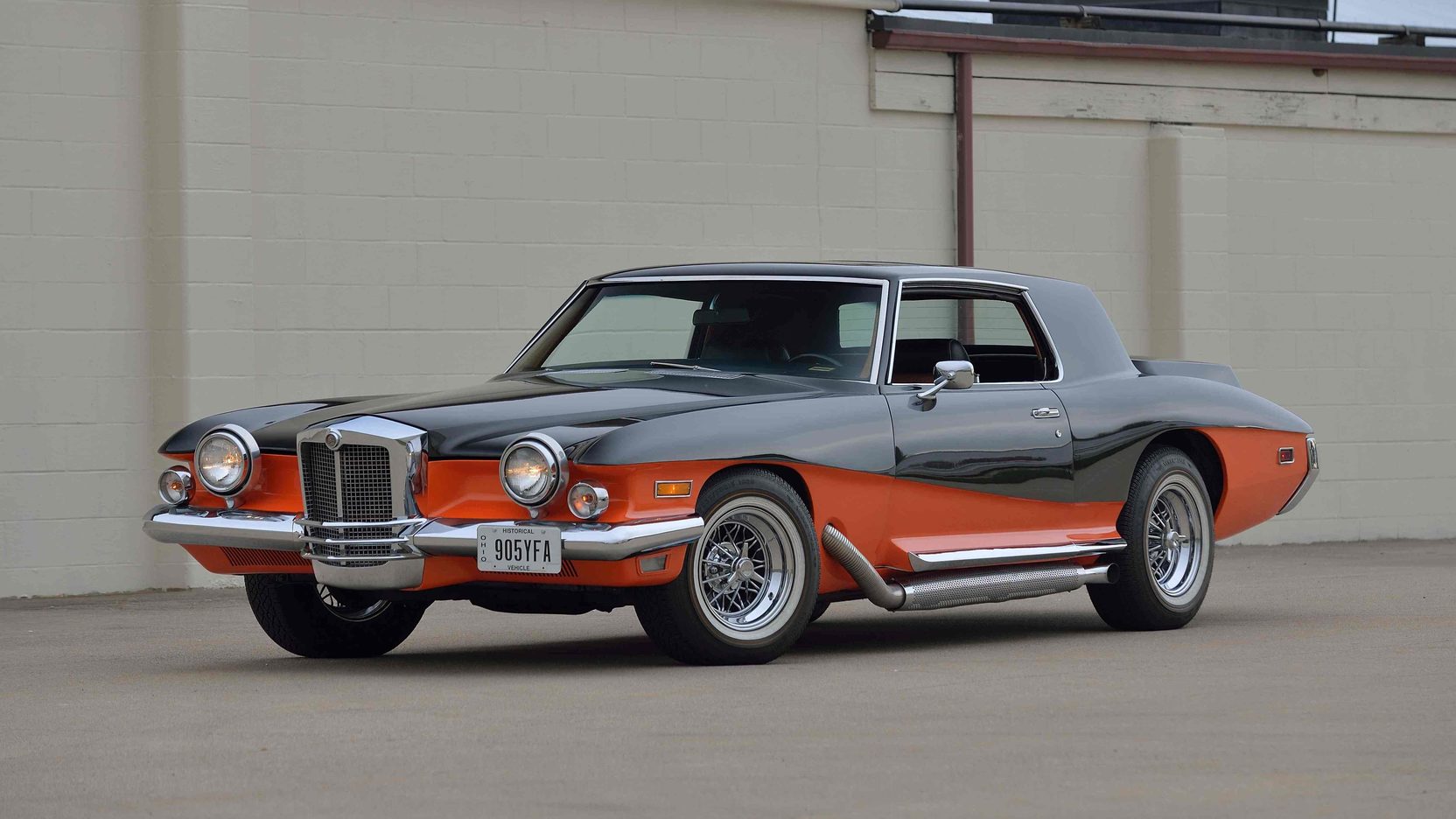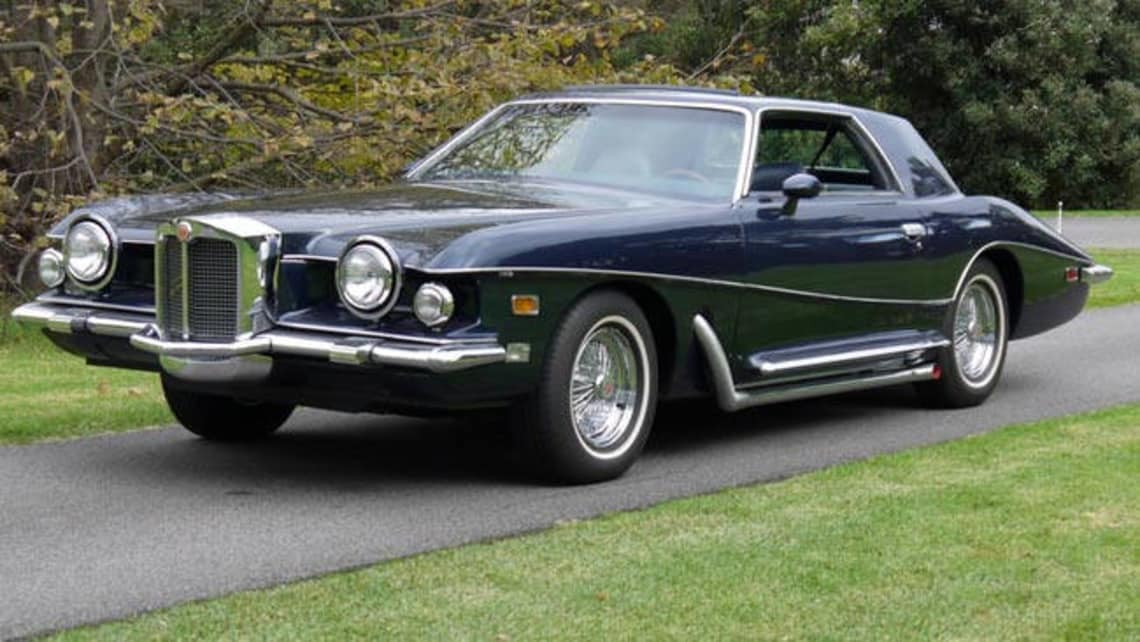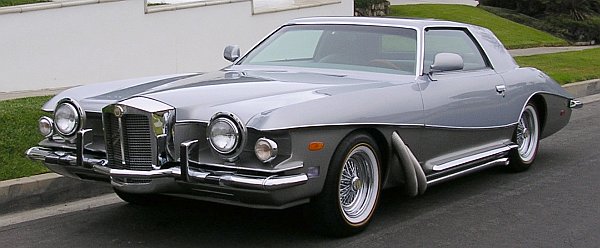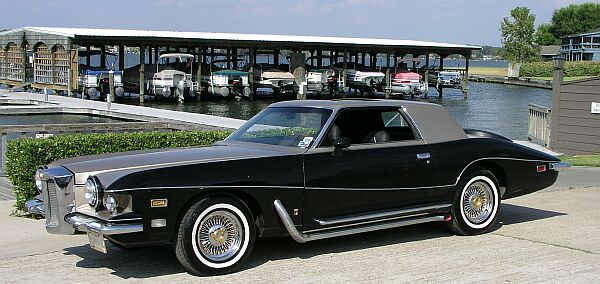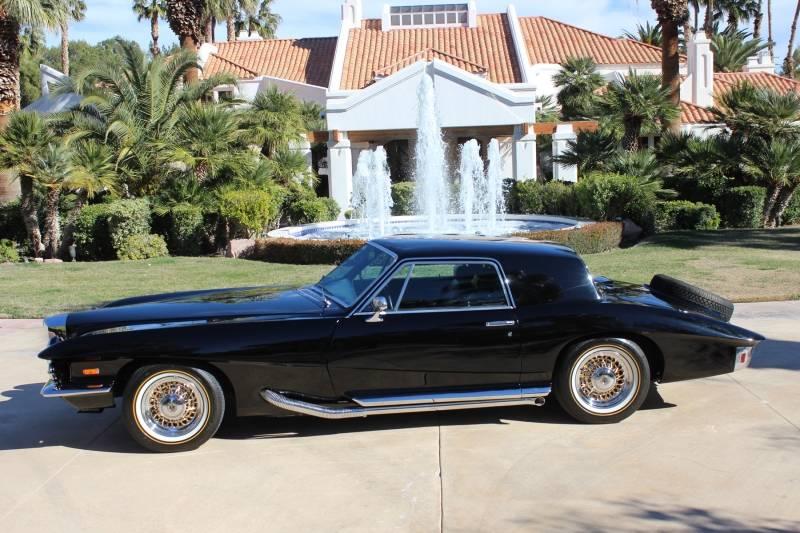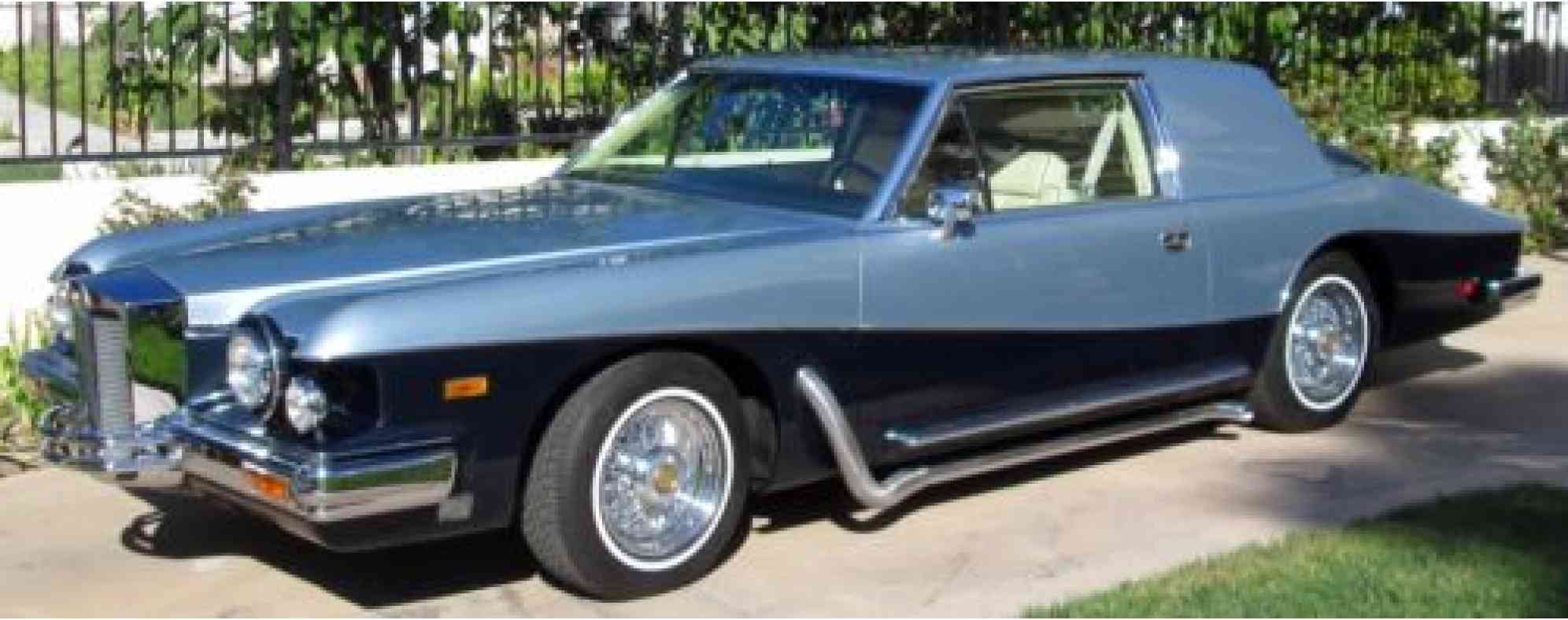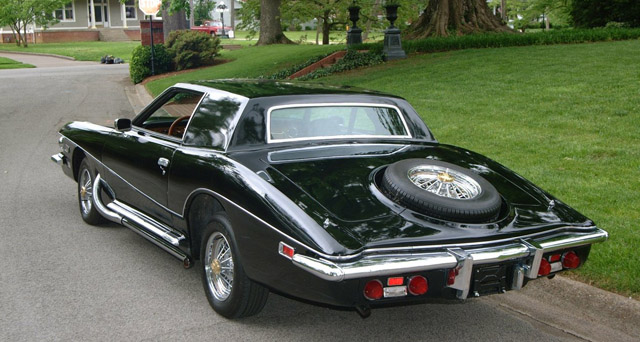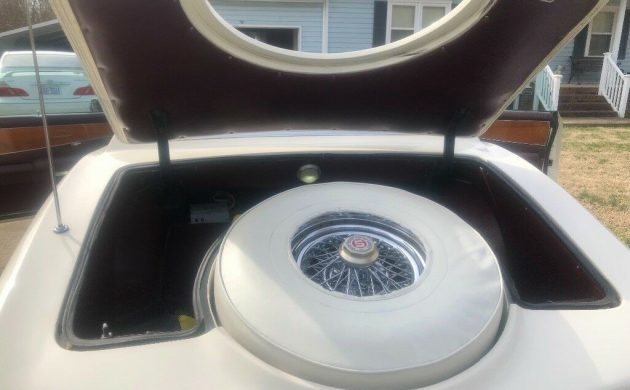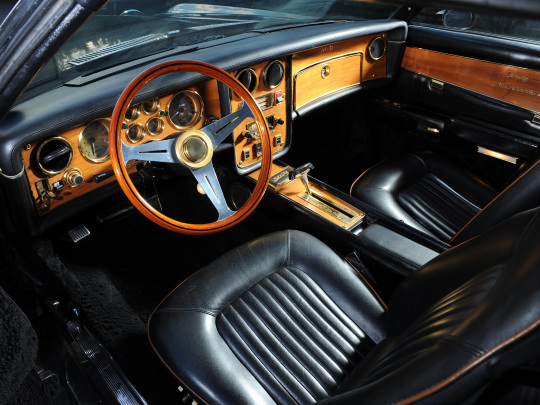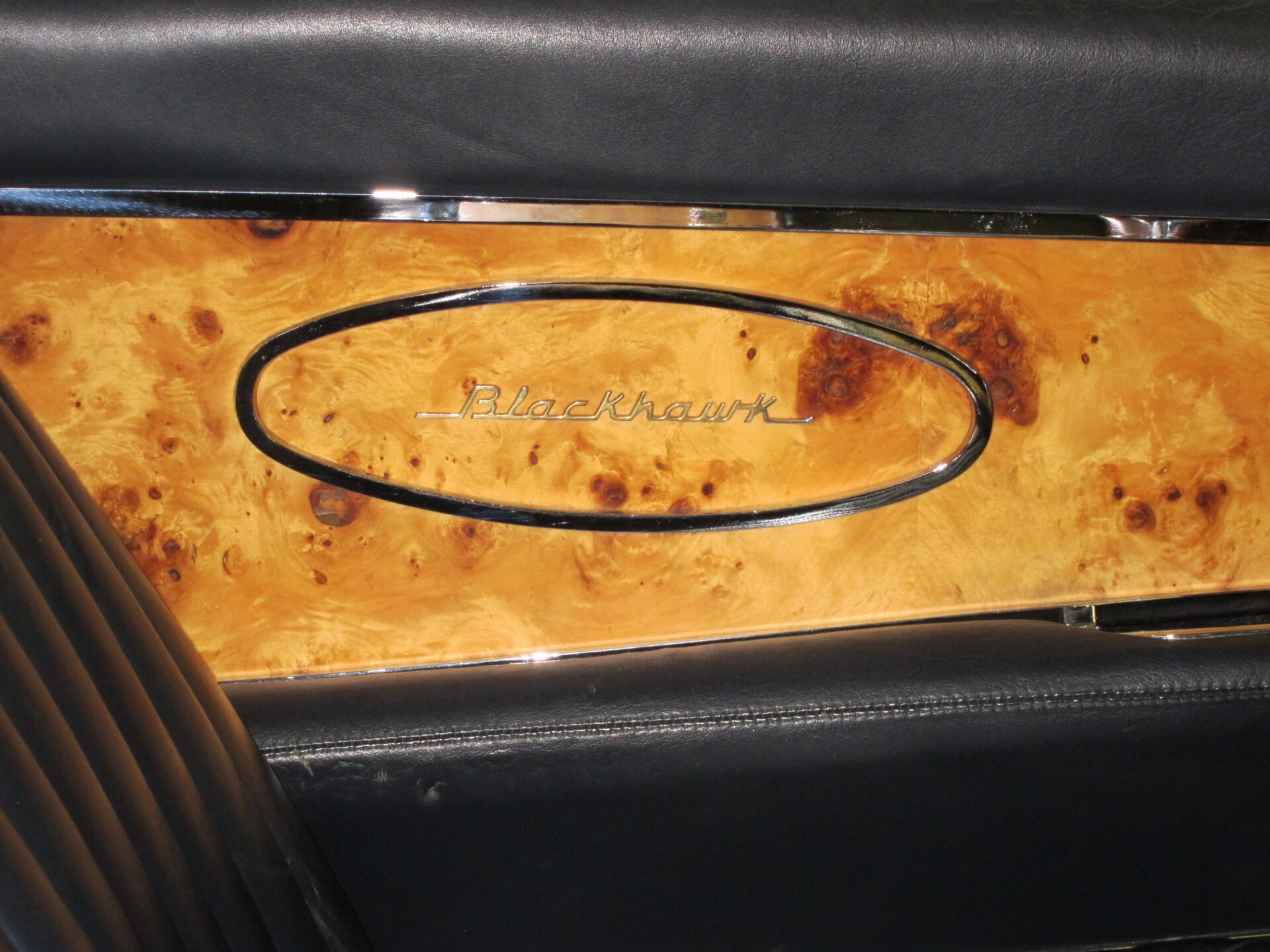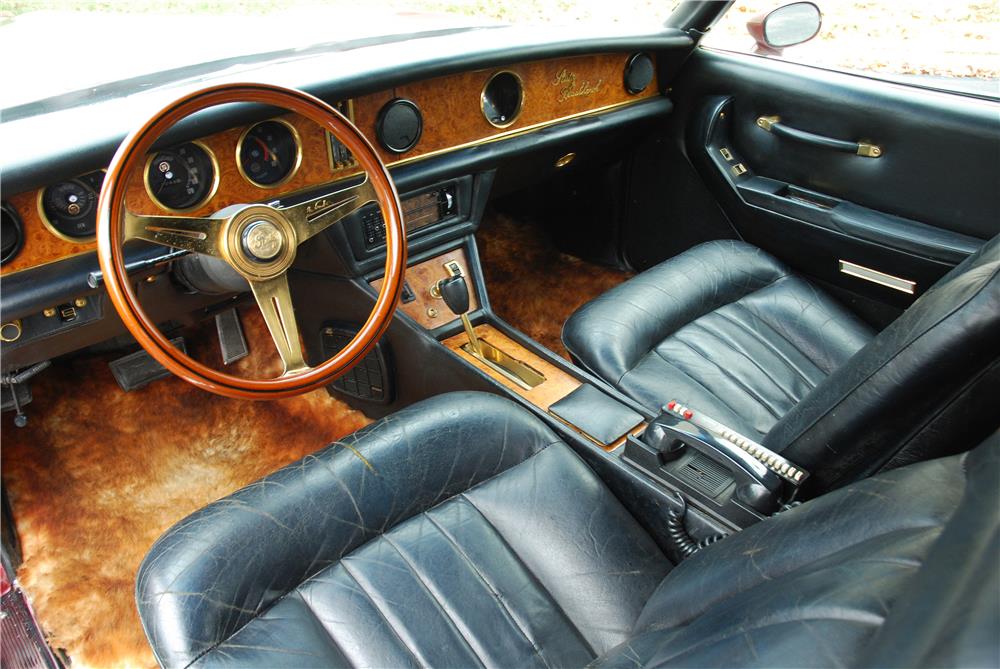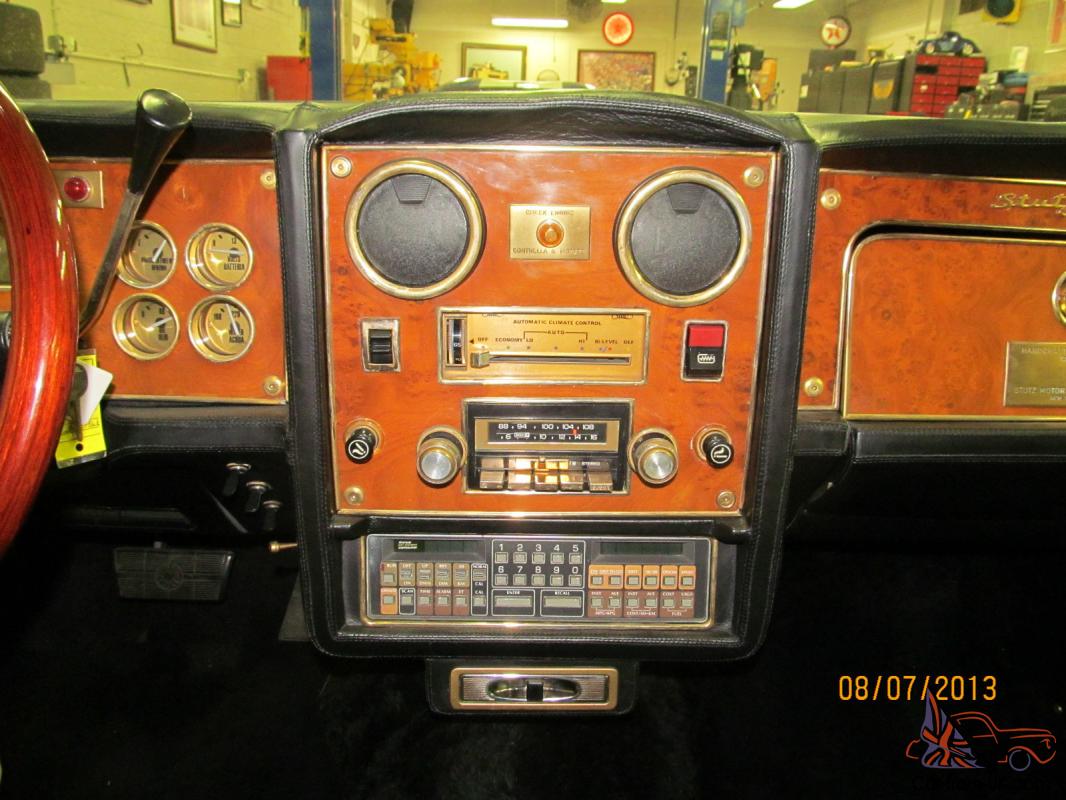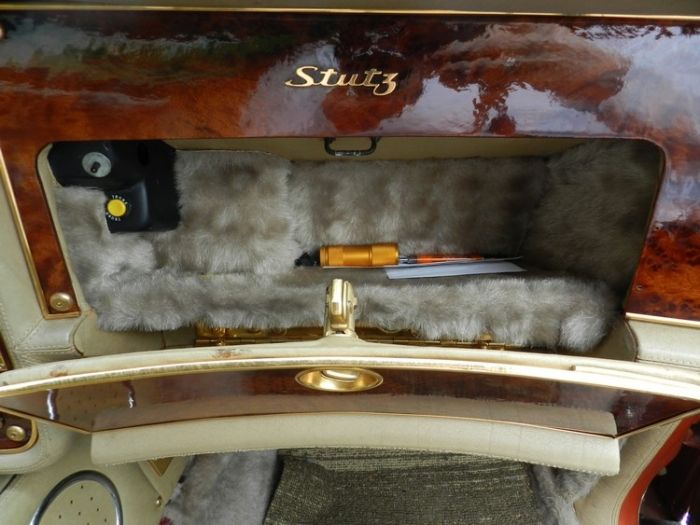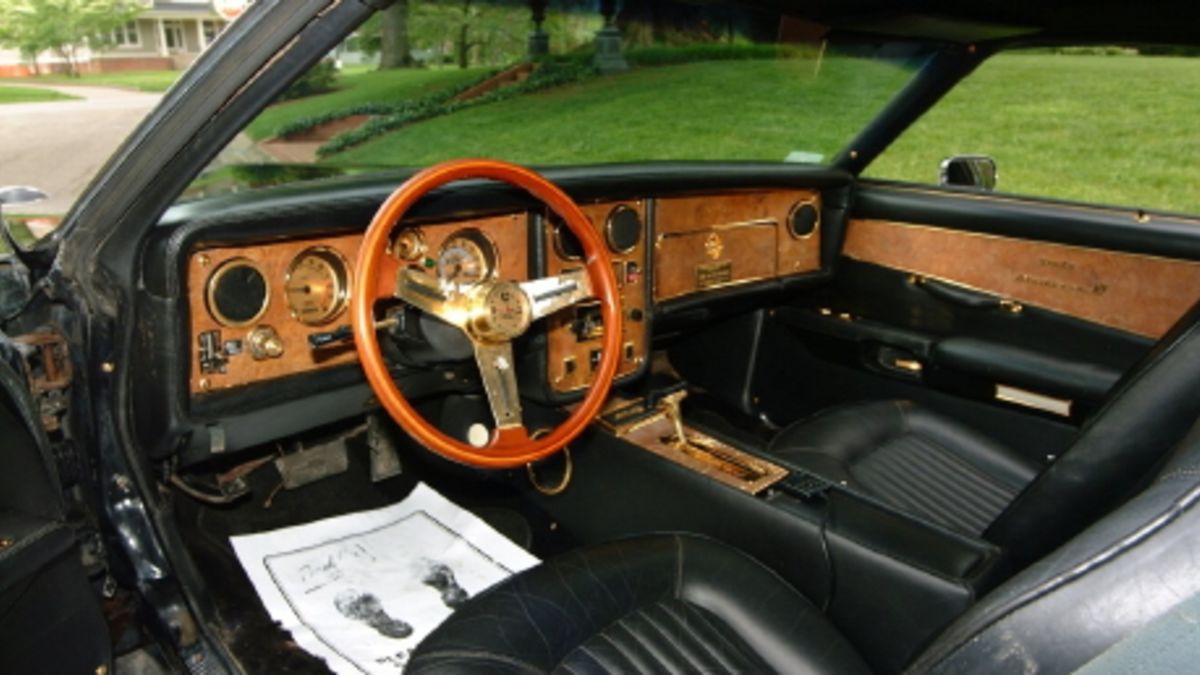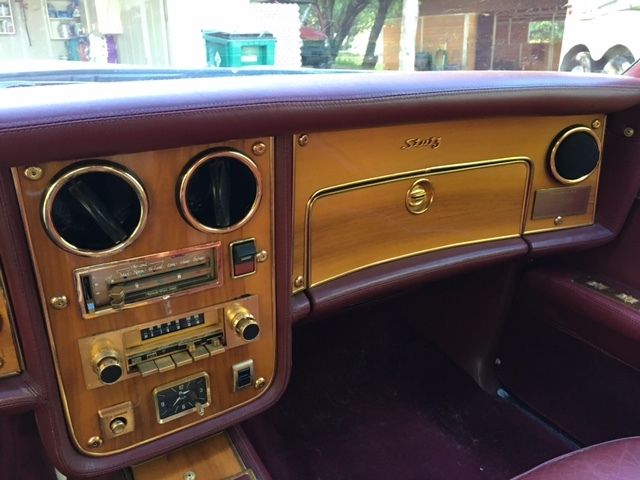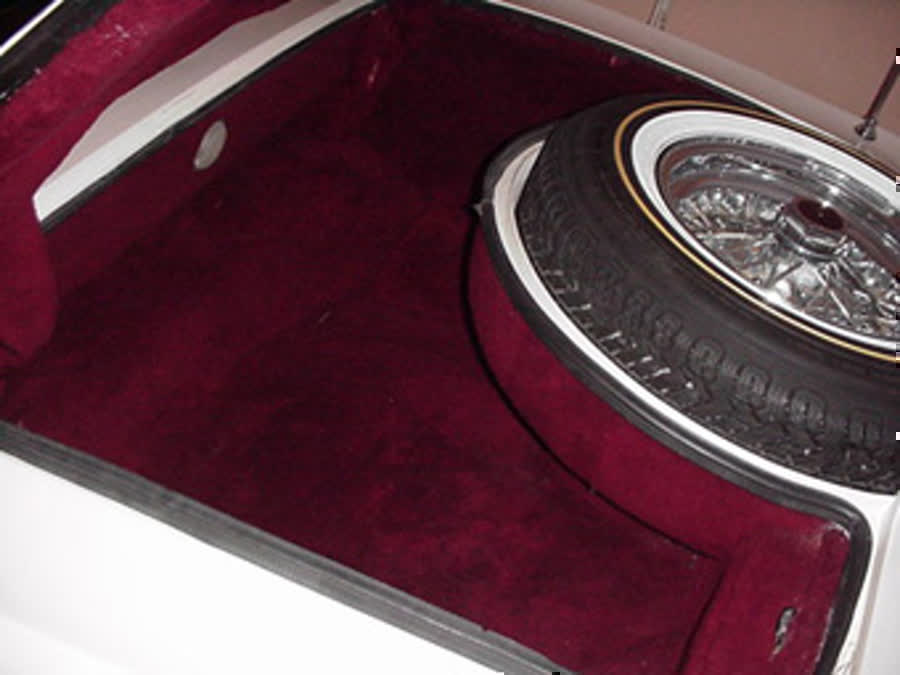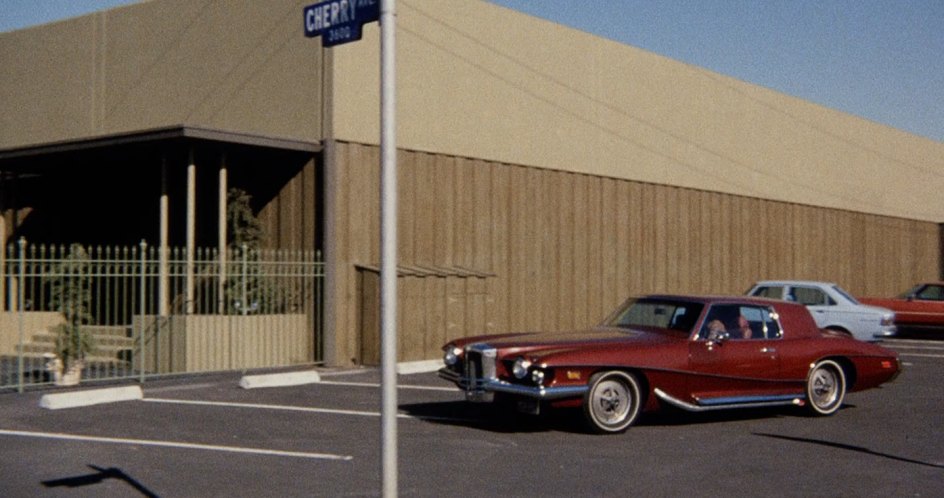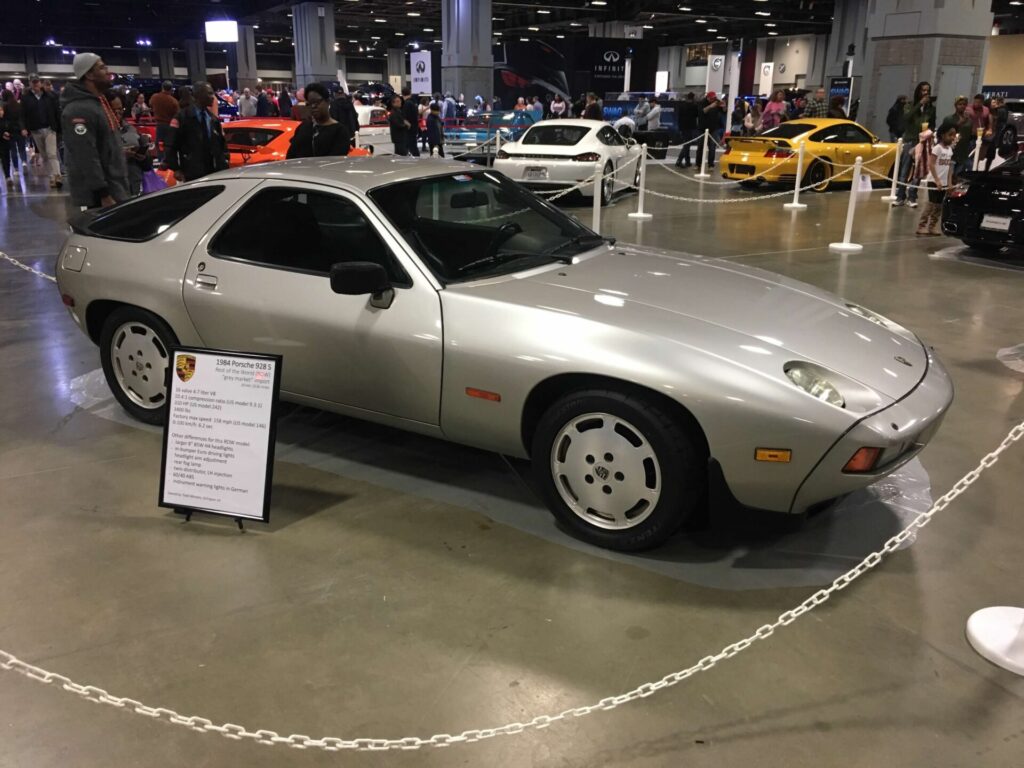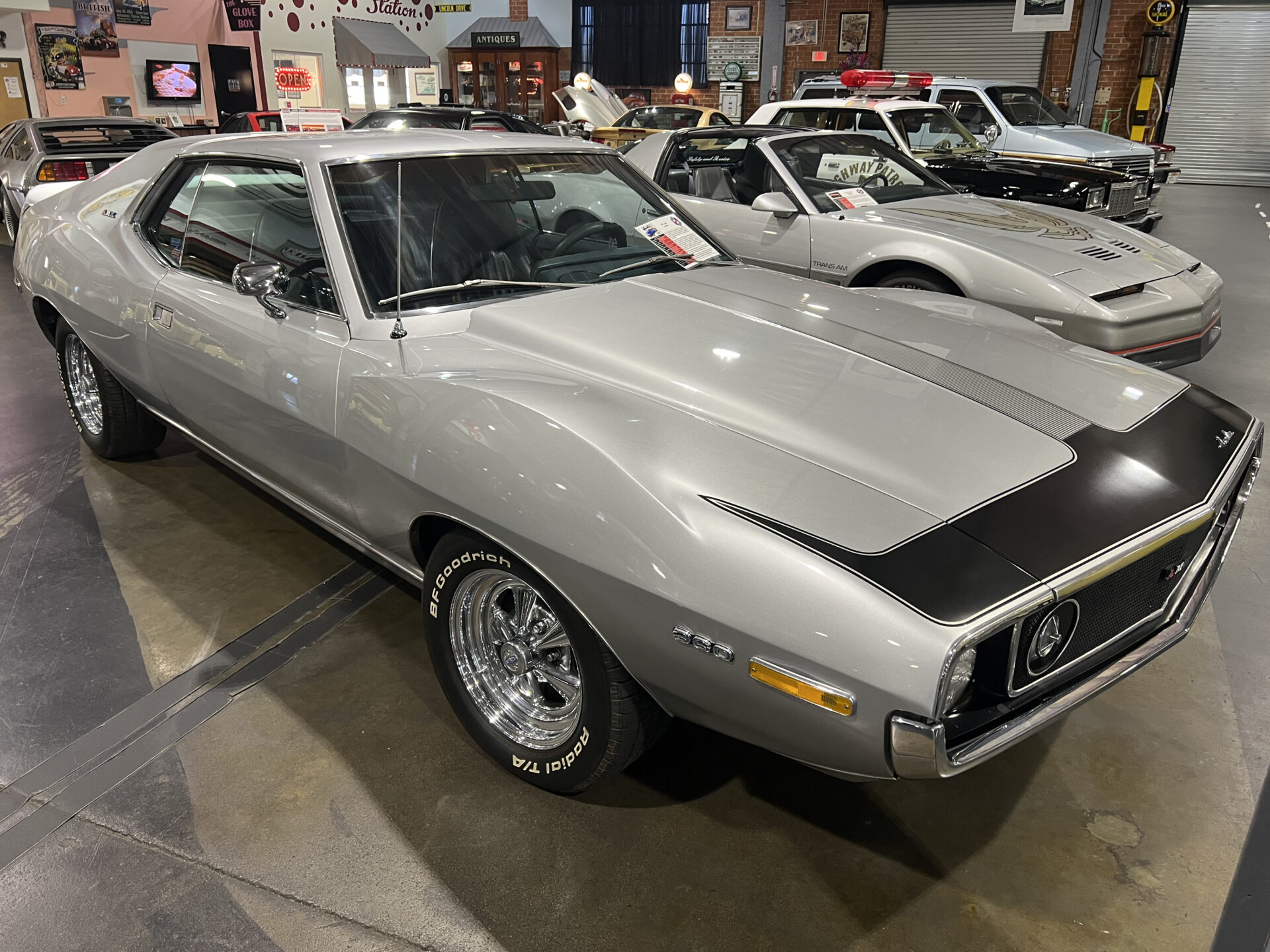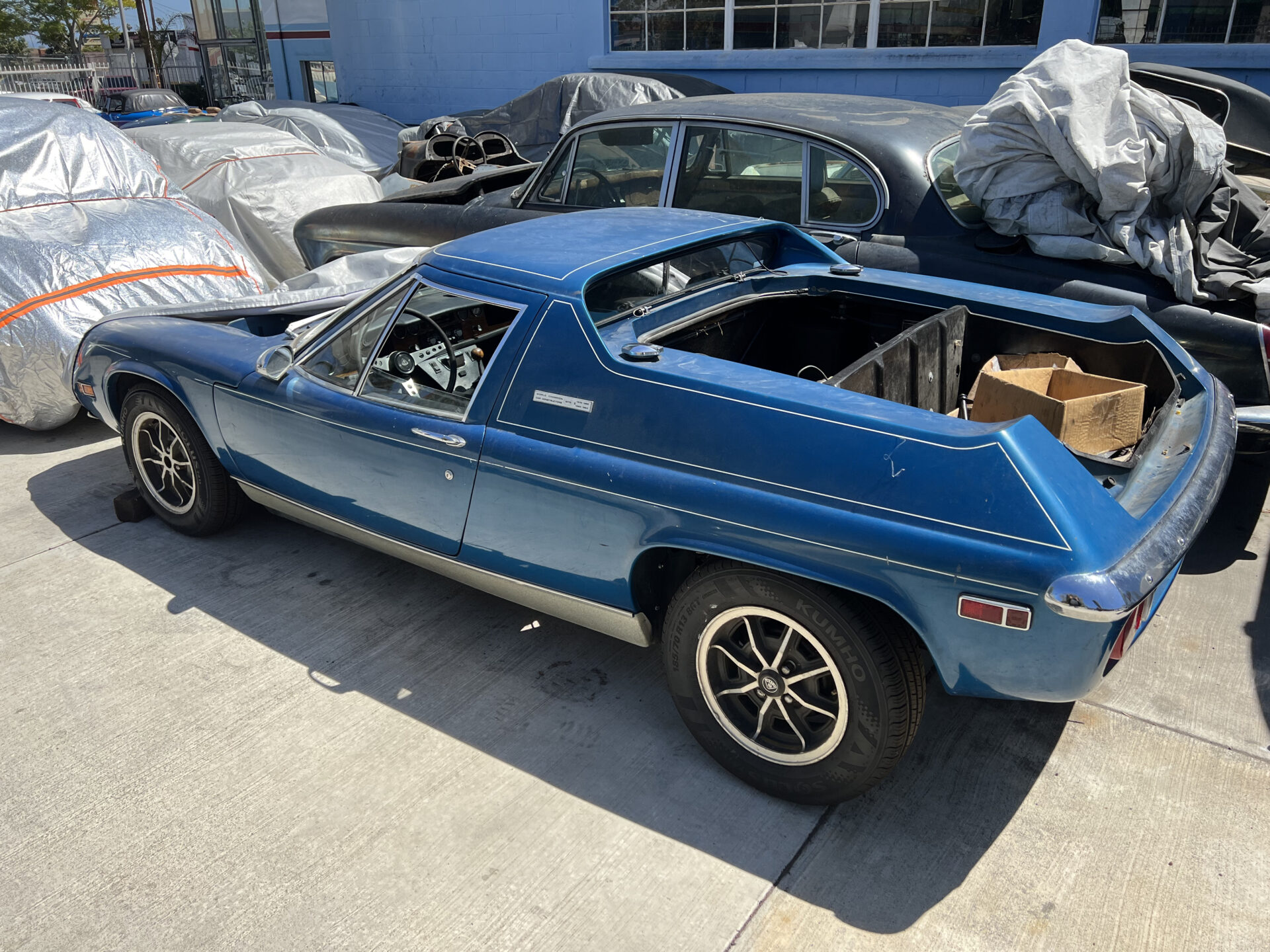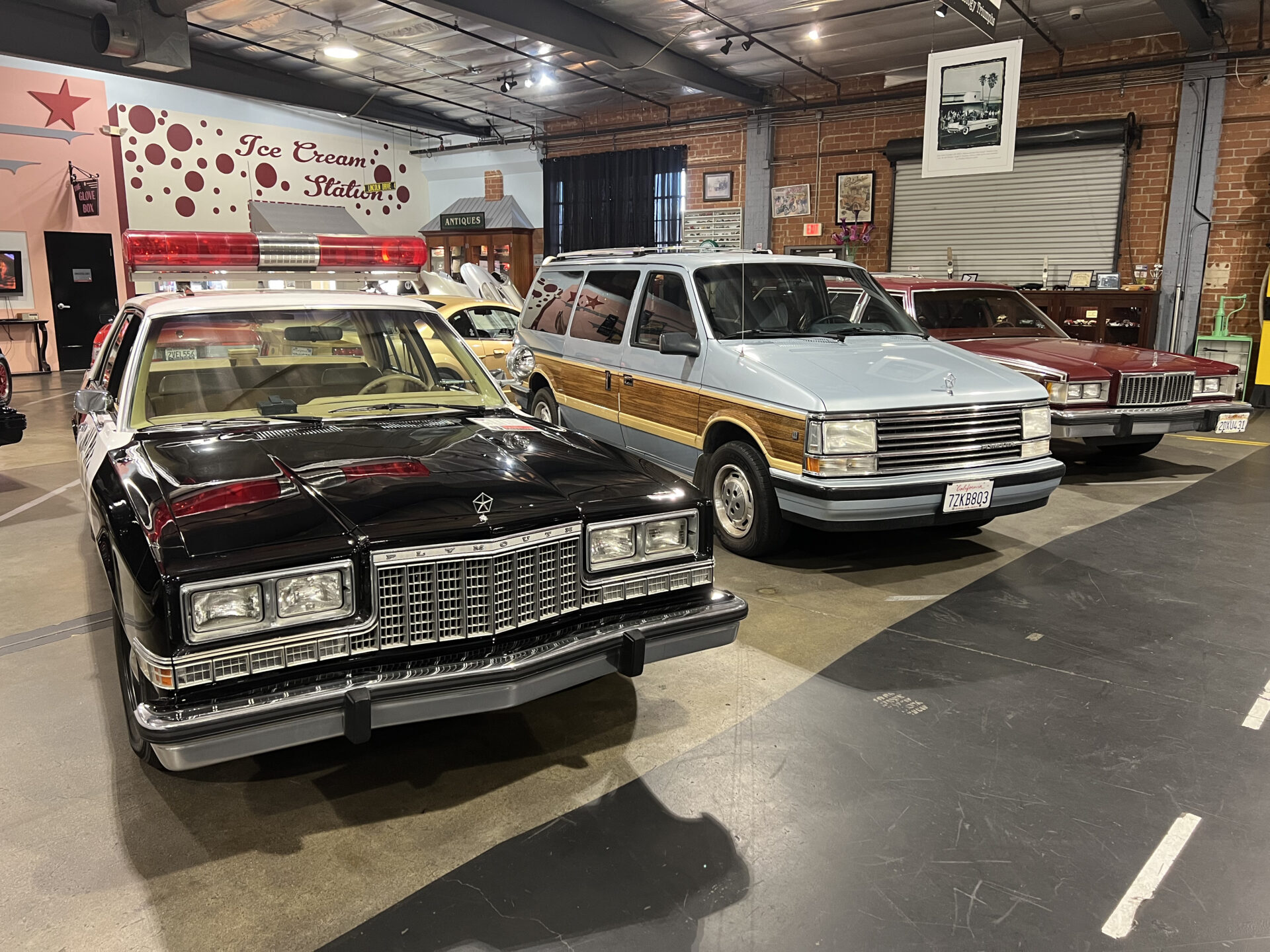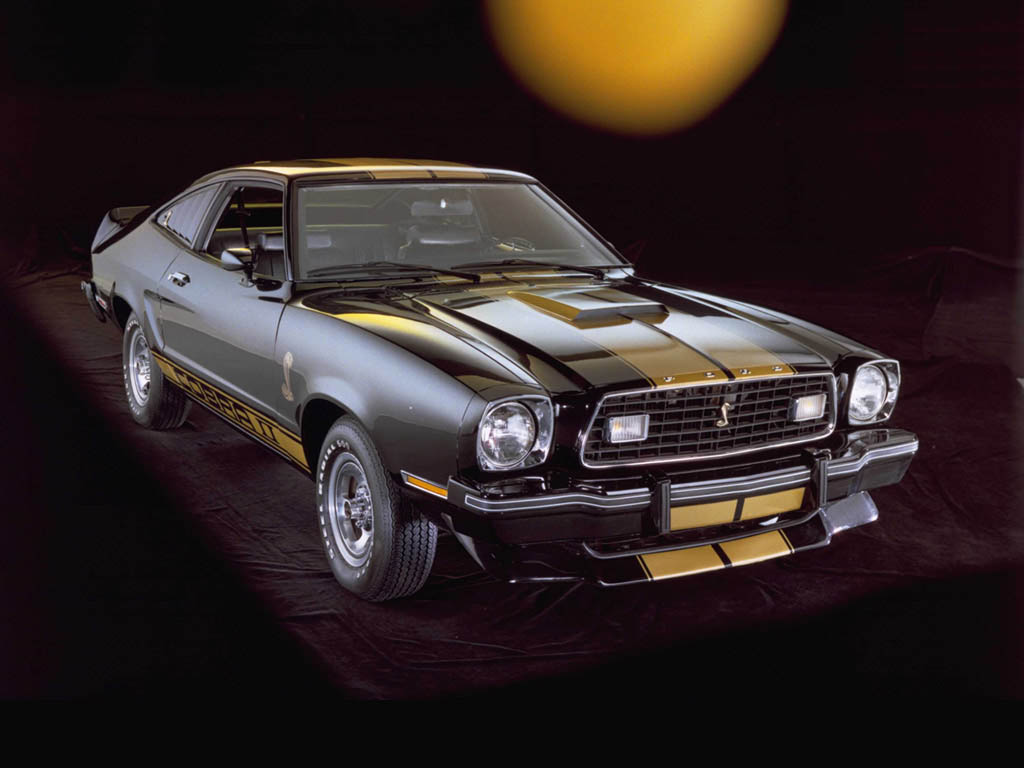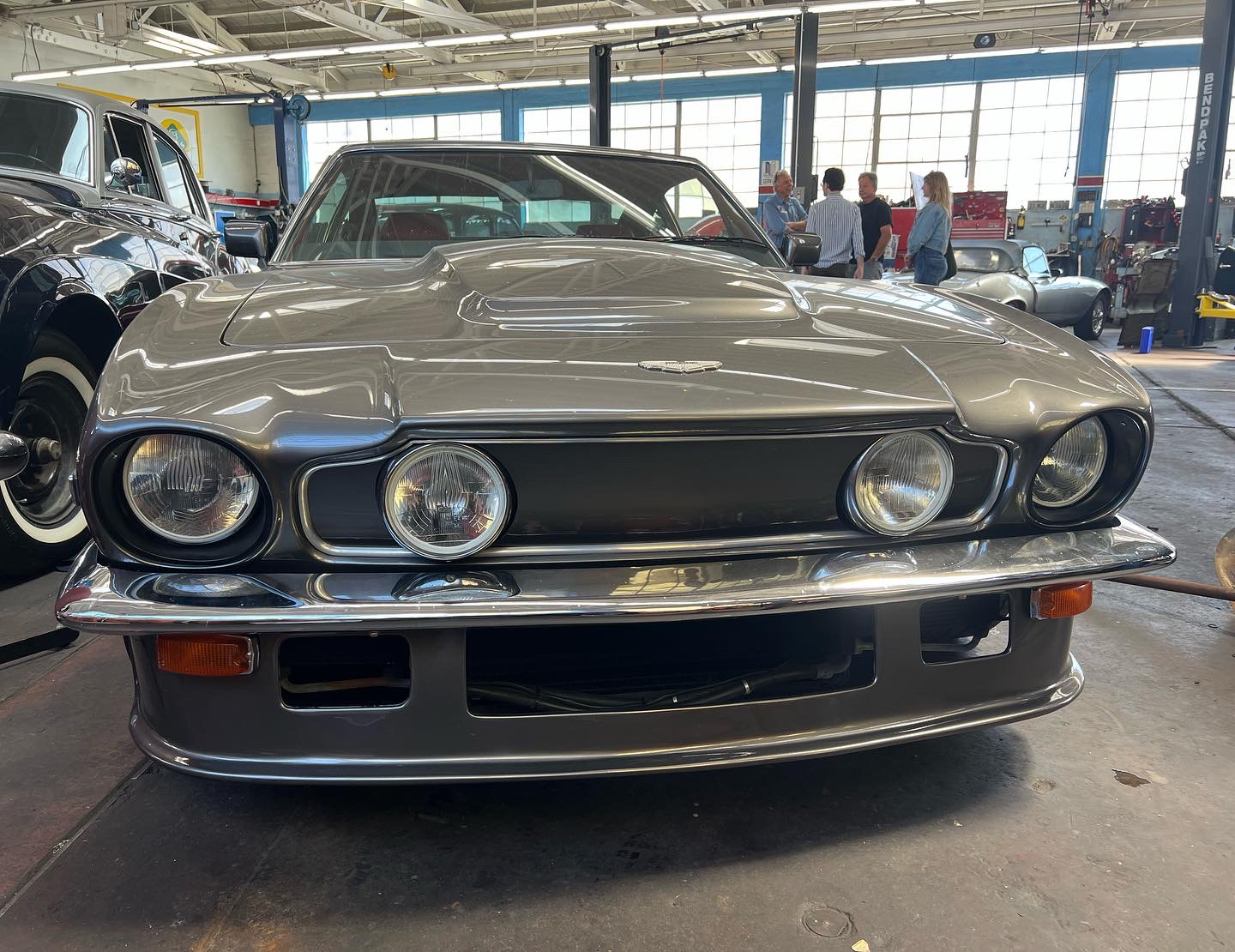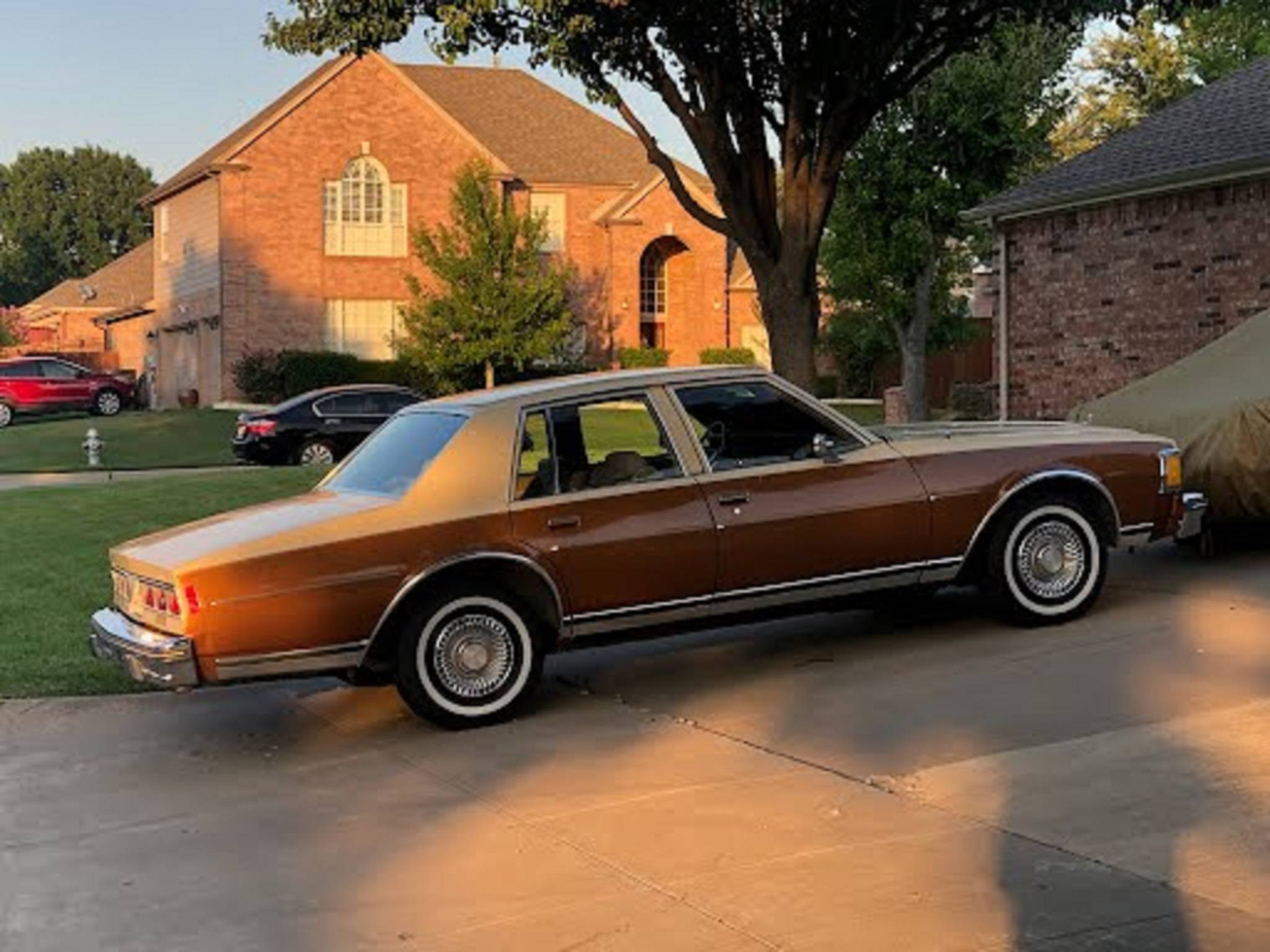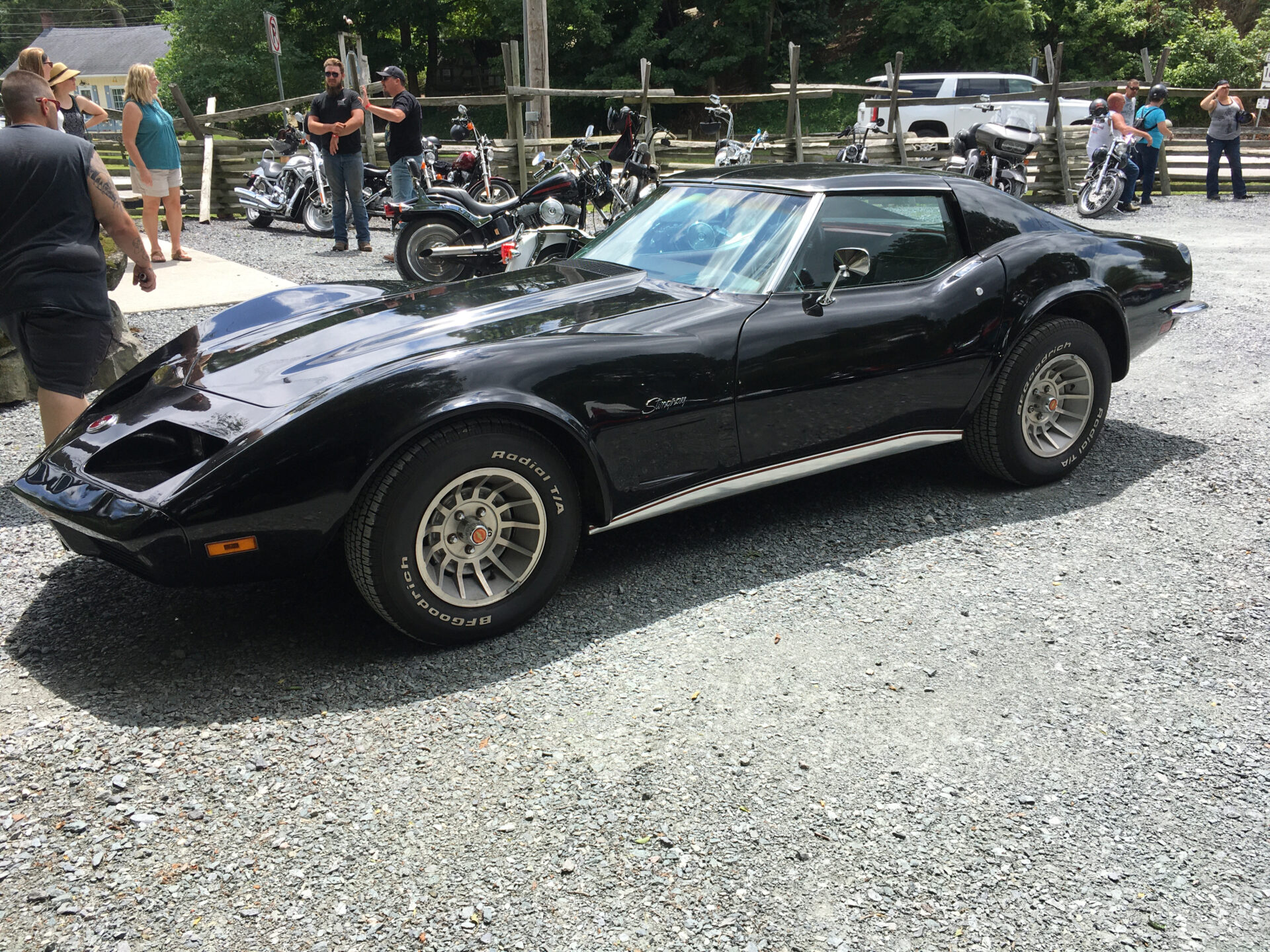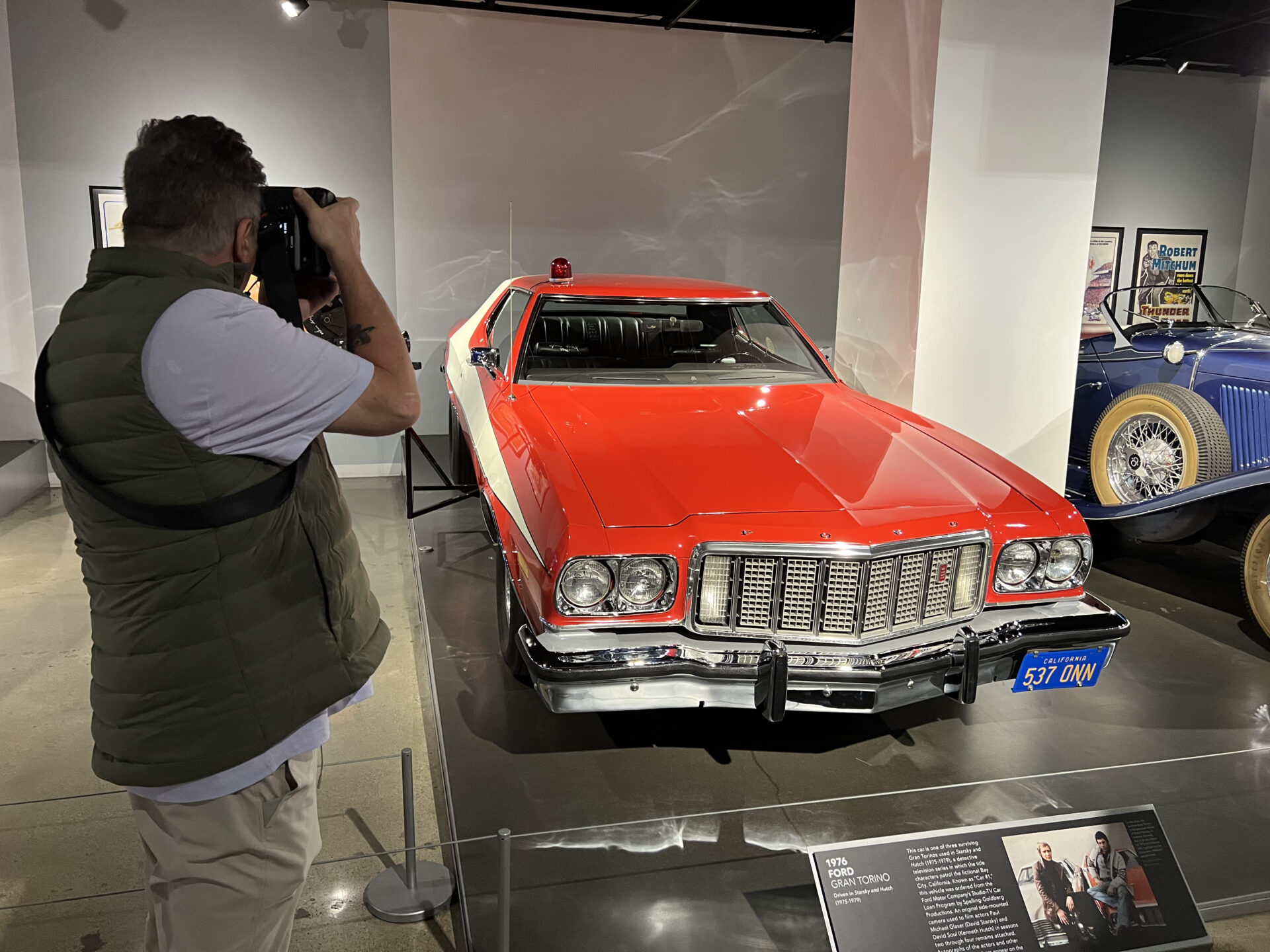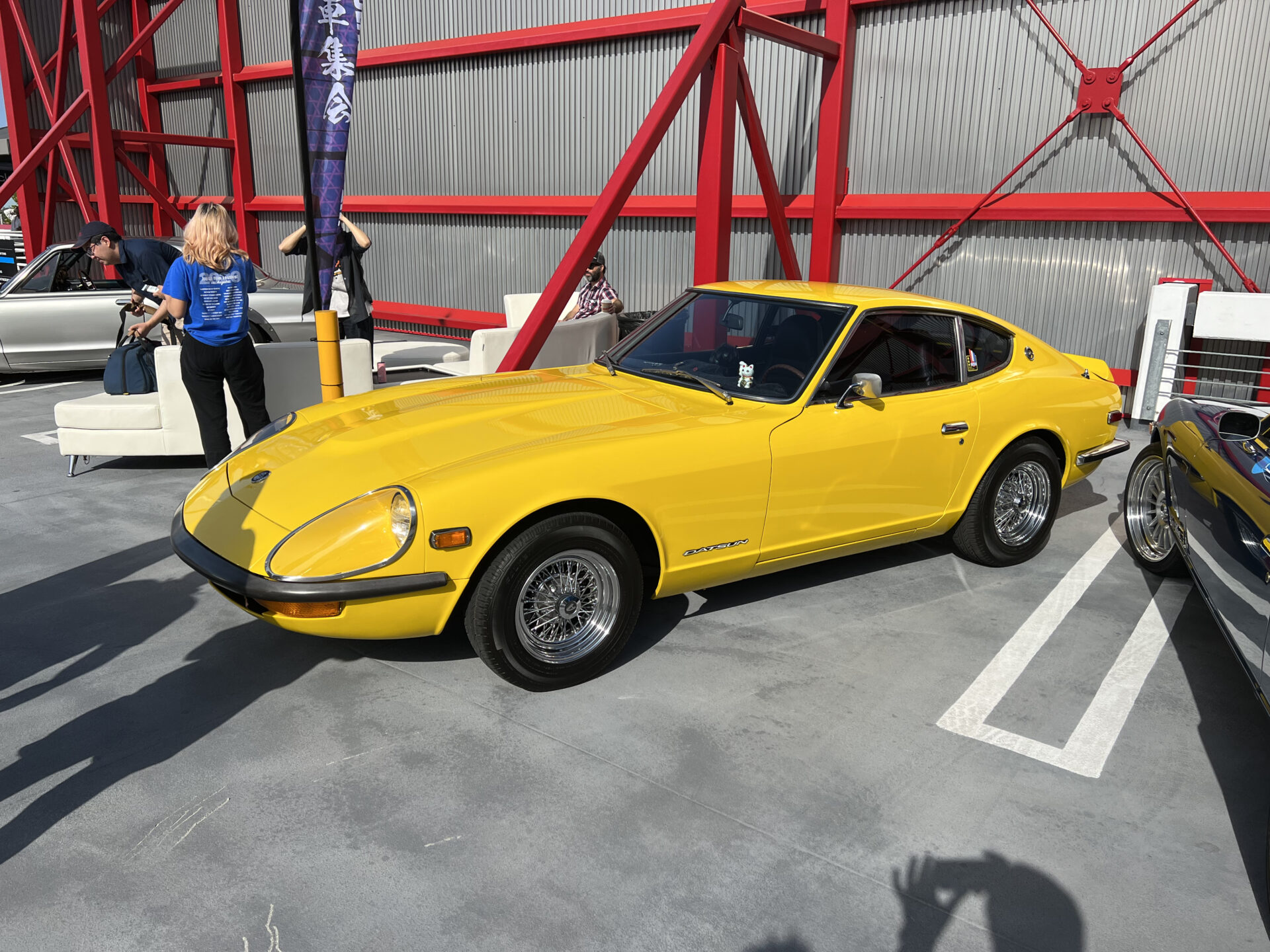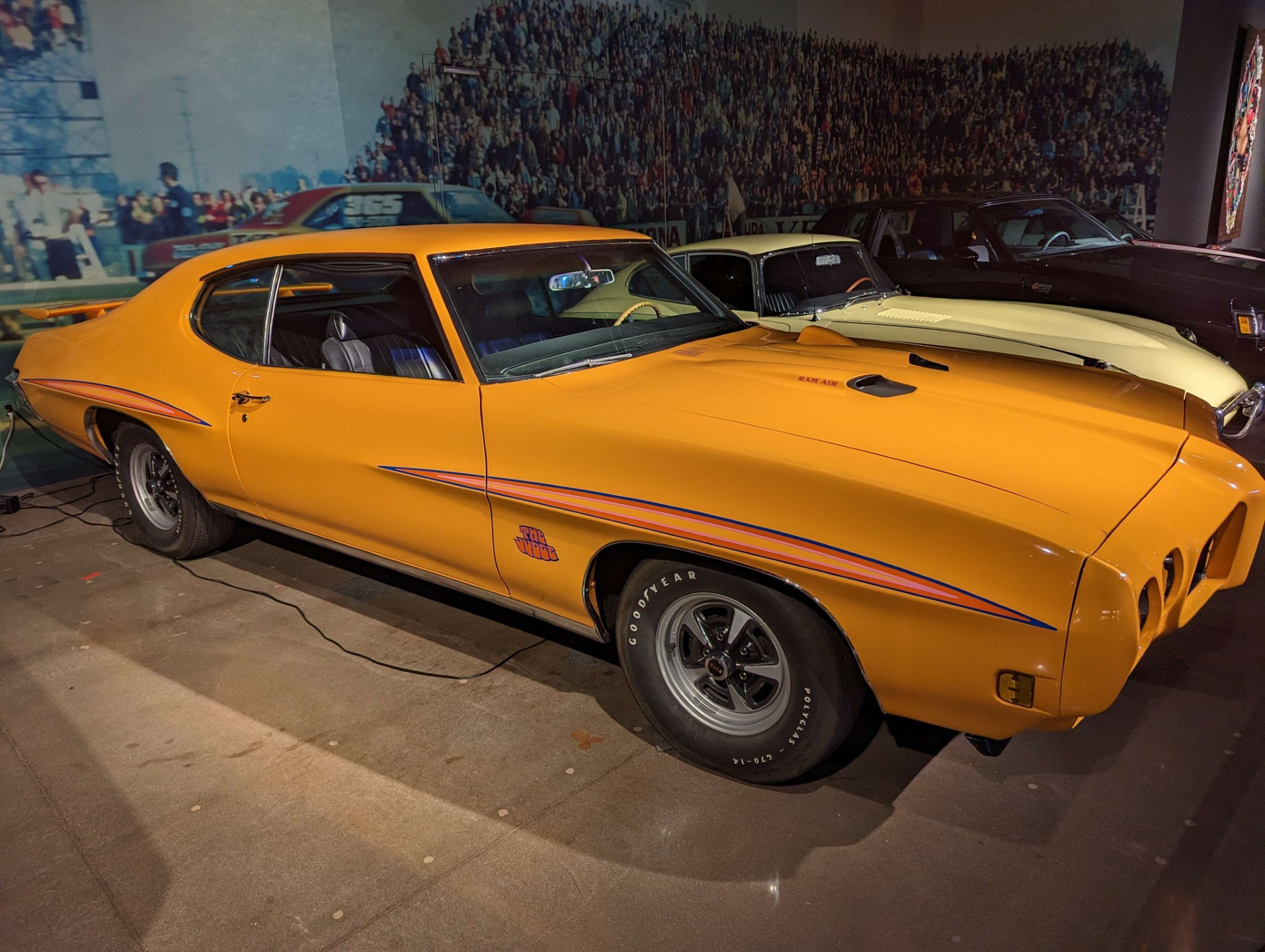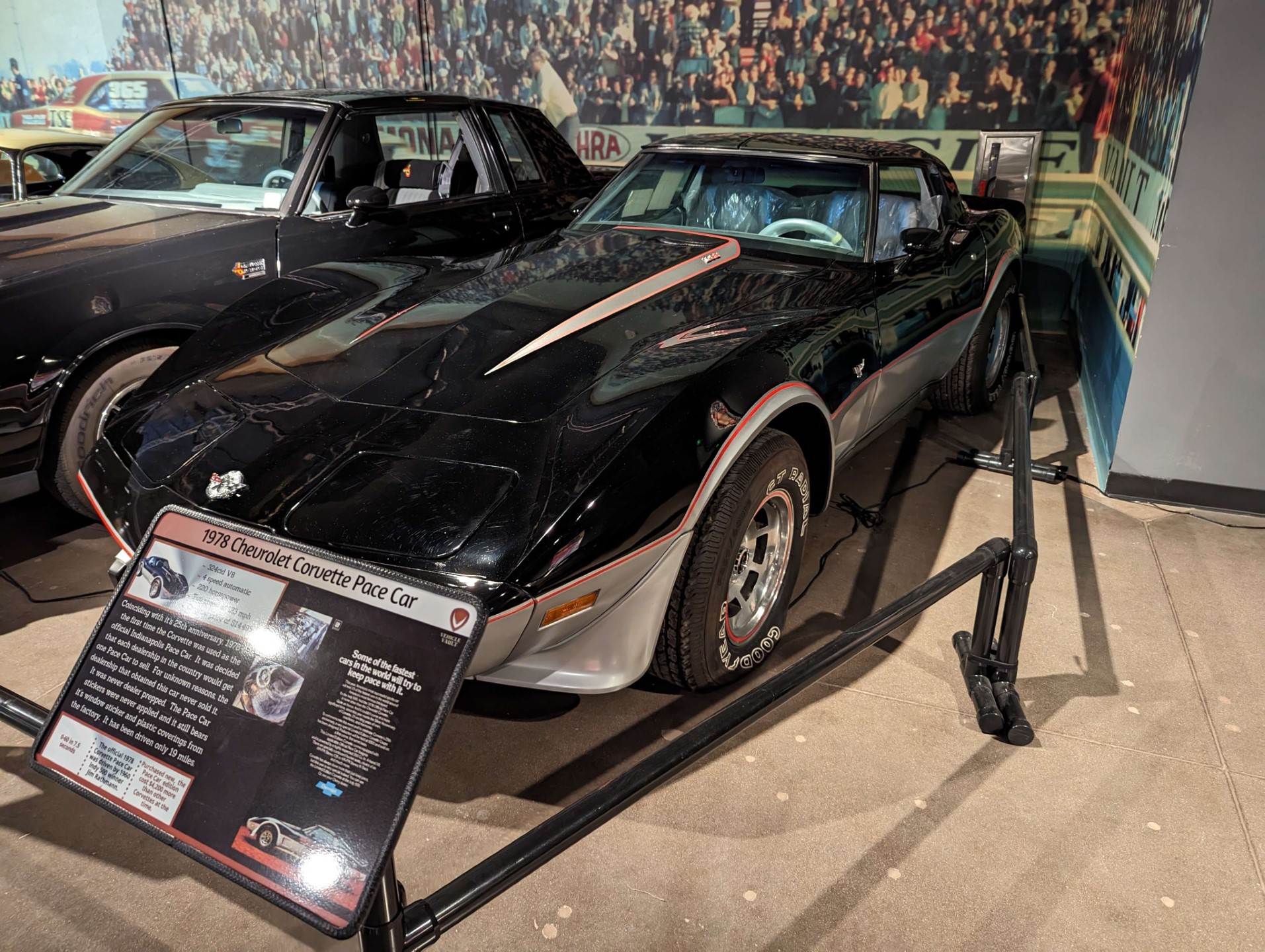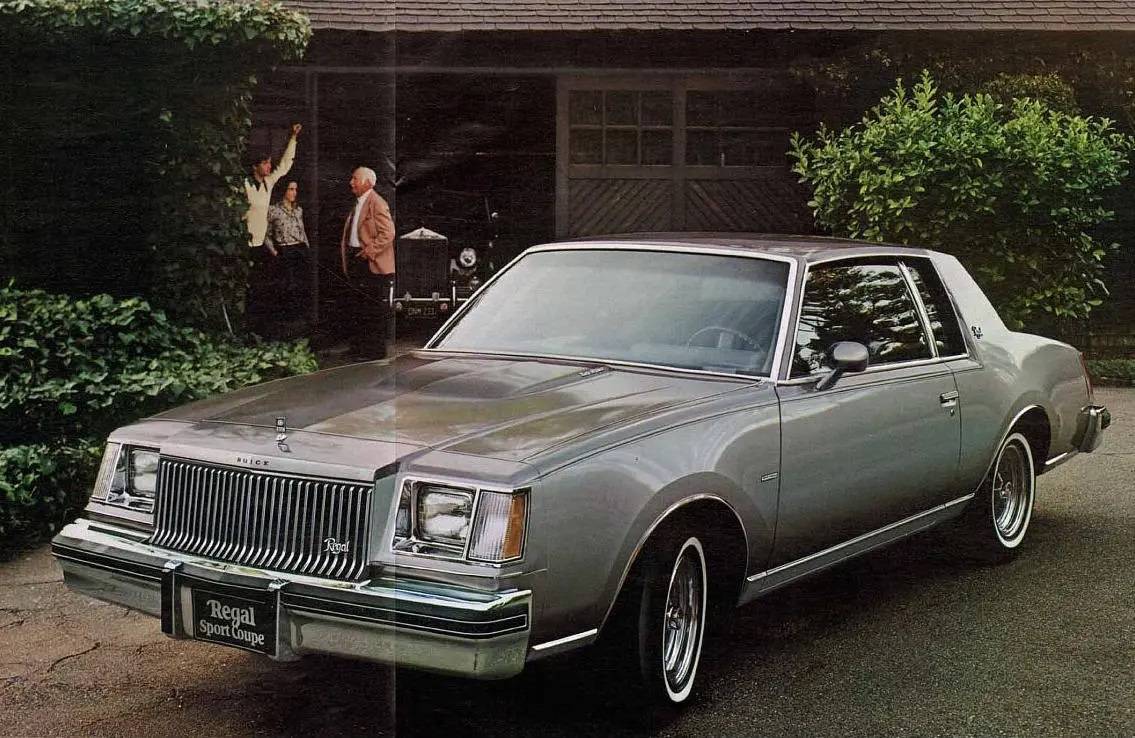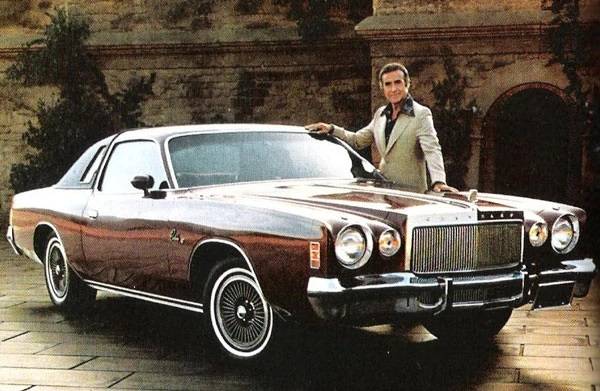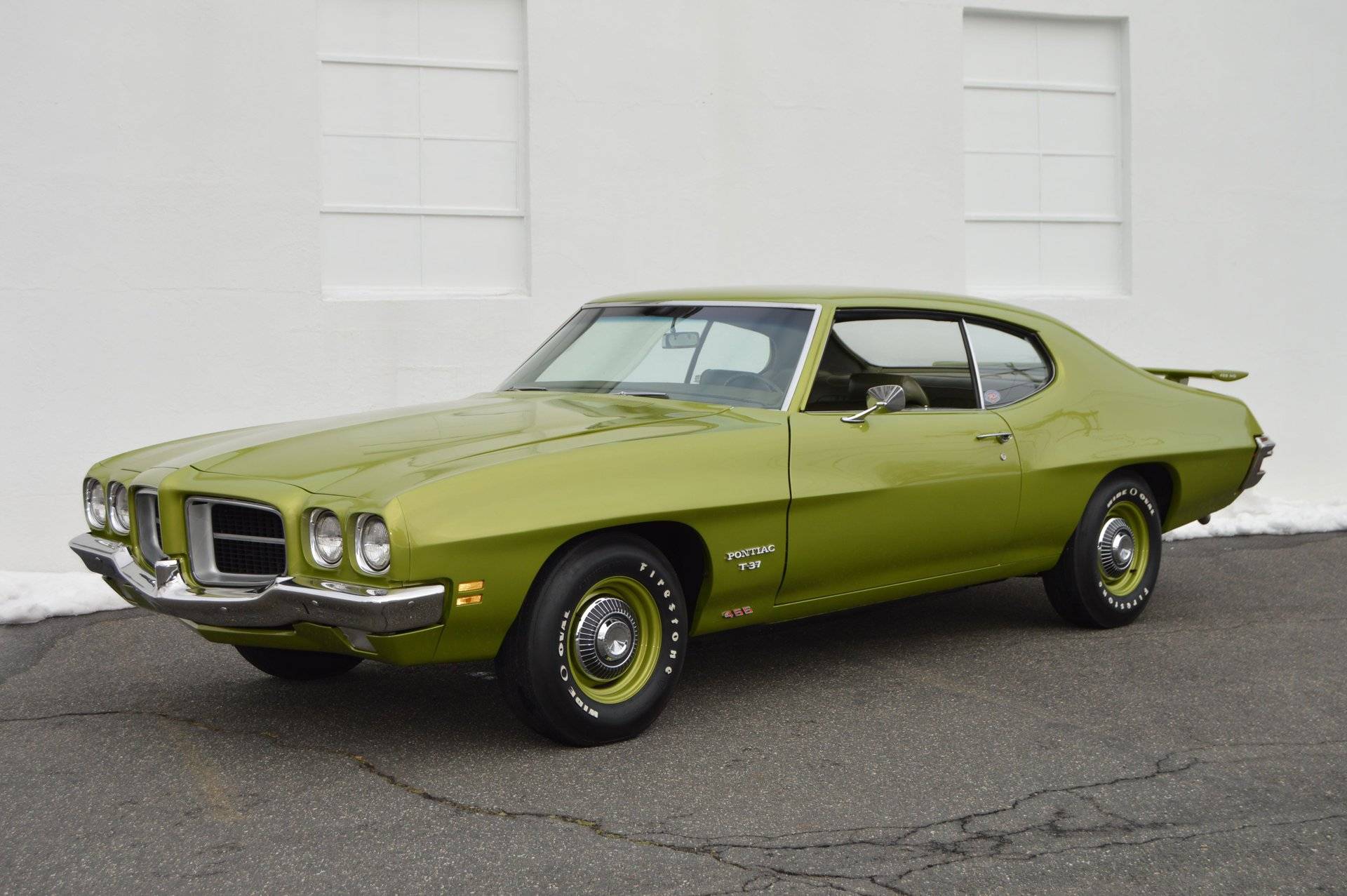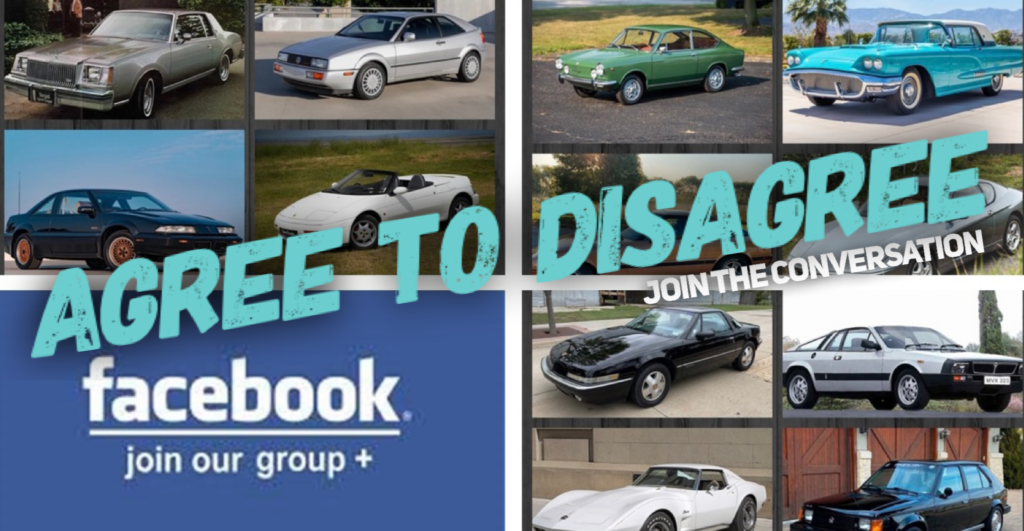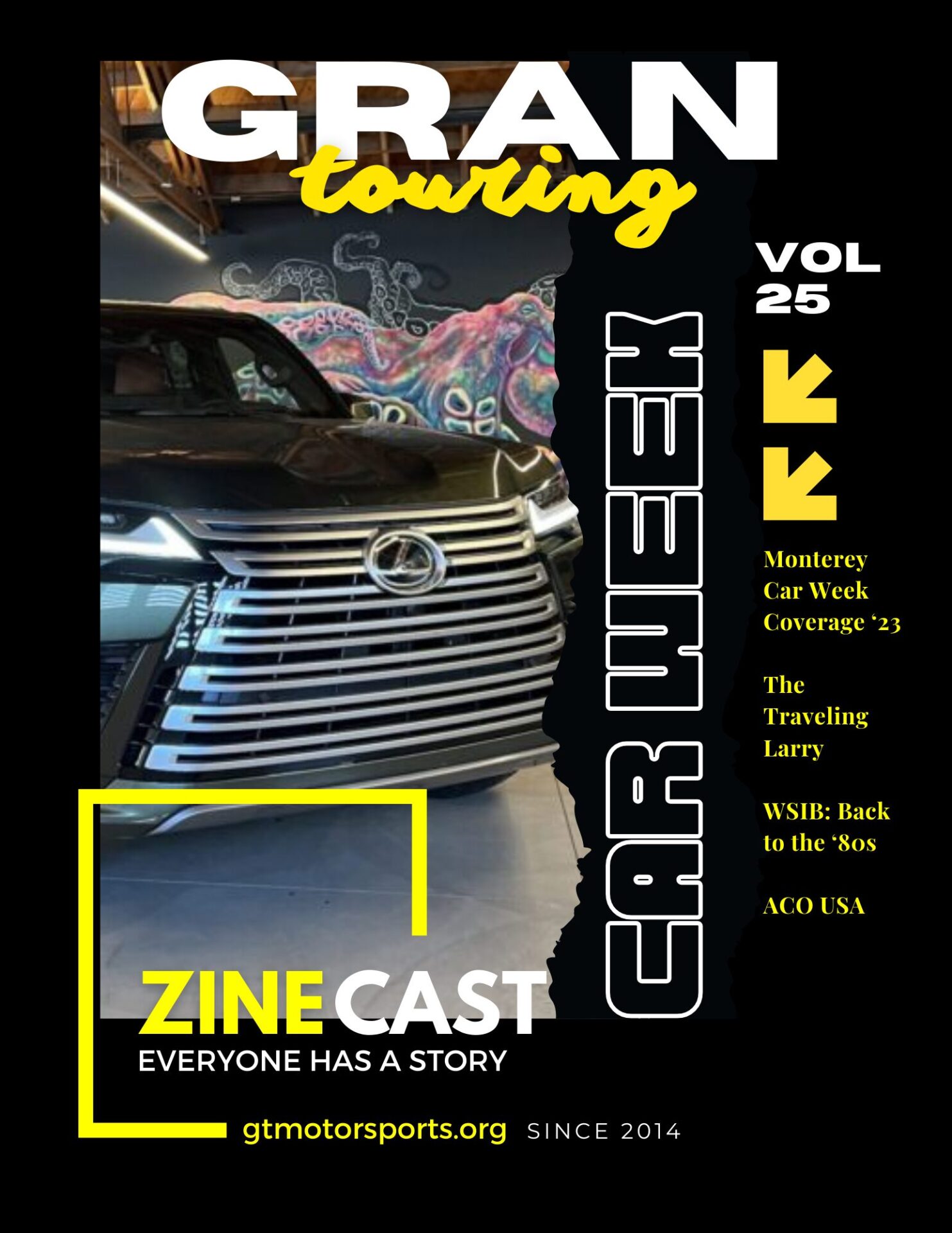Like most enthusiasts in the collector hobby, we are Camaro’d, Cuda’d & Mustang’d out. It’s time for something new, time to rediscover the unsung heroes from a period when Square-bodies and round headlights were all the rage!
You asked… we answered. From our latest fan poll, there was an overwhelming consensus that our listeners wanted us to come back for yet another WSIB, this time hyper focusing on the cars from 1964 to 1982.
And like all What Should I Buy (WSIB) episodes… we have some shopping criteria. This time, anything goes, as long as it’s not the same ole Muscle & Malaise we see at our local car shows. Our panel of extraordinary petrol-head panelists are challenged to find our “first time collector” something that will make their friends go “where’d you get that?” at the next Cars & Coffee. #noposers
Joining us tonight are veteran WSIB panelists… Mark Shank our ‘90s expert, Don Weberg from Garage Style Magazine, and Rob Parr from Collector Car Guide, along with Mountain Man Dan, and special guest Andrew Mason from the Big Man In a Little Car episode!
In our discussion with the WSIB Panel, we cover topics like:
Tune in everywhere you stream, download or listen!
 |  |  |
- Notes
- Transcript
- Highlights
Notes
- First, I think we have to define “What is a Muscle Car?” and how is a Malaise era car different? What does Malaise even mean? (Don!)
- Do we have any exceptions that we can take off the table along with the Camaro, Cuda, Mustangs… ie: Chevelle, GNX, WS6, Viper, etc.
- Resto-mods, Swapped Cars, and EV swaps?
- Underappreciated or Hopeful classics > Prospecting
- Classics for under $50k – Affordable Classics
- Classics between $50-100k – Investments
and much, much more!
Transcript
Crew Chief Brad: [00:00:00] Our panel of break fix petrolheads are back for another rousing what should I buy debate. Using unique shopping criteria, they are challenged to find our first time collector the best vehicle that will make their friends go, where’d you get that, or what the hell is wrong with you, at the next Cars and Coffee.
Crew Chief Eric: Like most enthusiasts in the collector hobby, we are Camaro’d. Cuda’d and Mustang’d out. It’s time for something new. Time to rediscover the unsung heroes from a period when square bodies and round headlights were all the rage.
Crew Chief Brad: You asked and we answered. From our latest fan poll, there was an overwhelming consensus that our listeners wanted us to come back for yet another What Should I Buy?
This time, hyper focusing on the cars from 1964 to 1982.
Crew Chief Eric: And like all What Should I Buy episodes, we have some shopping criteria. This time, anything goes, as long as it’s not the same old muscle and malaise we’re used to [00:01:00] seeing at our local car shows. Our panel of extraordinary petrolhead panelists It’s our challenge to find our first time collector, something that will make their friends go, Hey, where’d you get that?
At the next cars and coffee
Crew Chief Brad: joining us tonight, our veteran, what should I buy? Panelists, Mark Shank, our nineties expert Don Weyberg from garage style magazine and Rob par from collector car guide, along with special guests, mountain man, Dan and Andrew Mason from the big man in a little car episode. So welcome to the show.
Gentlemen.
Rob Parr: Welcome.
Crew Chief Brad: Good to be here. Now, before we get started, I just want to say that I’ve got a new drinking game. It’s kind of a two part drinking game. Every time Daniel mentions a square body, that’s the first one, and then the second one is every time Eric mentions something Mopar.
Crew Chief Eric: Ooh, interesting.
Crew Chief Brad: So is your goal, Brad, to put people in the hospital tonight?
Crew Chief Eric: We’re all going to be laid out
Crew Chief Brad: as Don mentioned. It’s a pretty big bottle and it’s brand new. So I’ve got a long way to go.
Crew Chief Eric: Well, gentlemen, just like our intro [00:02:00] States, it’s time to talk about mustard and mayonnaise, I mean, muscle and malaise. So what exactly do I mean by muscle and malaise? Well, I don’t know.
You tell me let’s define and turn to our resident experts, Don, Rob, and mountain man, Dan, to tell us exactly what. Those two terms mean in the automotive community,
Don Weberg: you say the word Malaysian think, Oh, Don,
Crew Chief Eric: so Don, we’ve talked about this on a previous episode, but to refresh our audience, what is the Malaysian era really all about?
Don Weberg: Let’s talk about them later. I think that was an era when power was at a minimum because you had what you had a lot of emission control. You had a lot of heavy cars from the safety standpoint. It was a point where, you know, all of a sudden the Dodge charger went from being the Dodge charger to being. A Cordova, you had to make amends with that because you couldn’t market a Cordova that did zero to 60 in 12 or 13 seconds.
That just wouldn’t work. So you had to do what? You had to gussy it up with Argyle sweaters and pop up collars. You had to give it [00:03:00] pinstripes. You had to give it custom trim. You had to give it all kinds of flash to make it look like you were really cool. Take for example, the Trans Am of Smokey and the Bandits.
That was an epic, cool car. But it was not capable of anything that they did in those movies. Nothing that car could basically get out of its own way. It still held his head above water compared to so many other performance cars of the era. But compared to say a 70 Trans Am or a 71 455 super duty, uh, it didn’t hold a candle, but what did it have flash pizzazz.
It was the bright, shiny object that everybody had to have. And the movie helped it do all of that. So that helped us get through there. Somebody here has a drinking game going on. And if there was ever an era for drinking, it was the malaise era.
Rob Parr: Yeah. The weight came on the cars and the luxury was definitely a transition as the years went on from.
Muscle to luxury every year after 72 and actually even 71, they started changing the horsepower ratings to net horsepower from [00:04:00] gross.
Mountain Man Dan: But a big thing during that timeframe up into like the early eighties, a lot of the manufacturers were purposely low balling their numbers. They were putting out an ads to where there were cases where they were taking them from the dealership to a dyno and it was pushing.
10, 15% more power than what they were advertising the vehicles to have.
Rob Parr: And then as time went on, you had a g r, you had other emissions controls, and eventually in 1975, we got the beloved catalytic converter. Of course, everybody cursed like crazy when it came out at 75, 76 were the lowest power cars.
There’s definitely sub 200 horsepower. I don’t think anything, at least on the American side was anything over 200 horsepower.
Mark Shank: There were a few, but you’re right, it was just around there. Right. L82 Corvette was like 220 by the end of the
Rob Parr: 70s. Actually back in the late 70s, it started coming back up again, but it tipped around 75 to 77.
I think the 77, the Z28 came back and of course you had your Trans Am. Like Don said, they got flashier and prettier. And unless you tuned them a little bit, they really didn’t do a whole lot. [00:05:00] So before we
Crew Chief Eric: go too far down memory lane, let’s throw out any exceptions to our general rules. As you guys know, and as our fans know, we try to do this for the first time collector.
So normally we come at this with a Budget in mind, we go zero to 50 grand, 50 grand to a hundred, a hundred to infinity, you know, things like that. But I don’t know that it necessarily applies here because we’re looking for diamonds in the rough. And we already said in the intro that we’re going to avoid the Camaros, the Kudas, the Challengers, the Mustangs.
I would say probably the Chevelles, a lot of their super popular cars that you see crossing every auction block. You see it at every weekend car show. So we’re really looking for something different, something affordable, something fun. Do we need to extend beyond the 1982 limit? Did anybody come up with that as an exception to this?
Crew Chief Brad: I’ve got a question. Do we want to extend beyond our borders too?
Crew Chief Eric: Yes.
Crew Chief Brad: They didn’t screw it up so bad.
Mark Shank: Then you’re talking about Porsche 930s and Skyline GTRs.
Crew Chief Brad: Well, [00:06:00] I mean, I don’t know if… They embody like the muscle car spirit. I don’t know if we want to go down and try and define what a muscle car is.
Every time we do Mark and I end up getting into an argument about something stupid. But
Don Weberg: now at dinner tonight, my wife and I were just kind of doing a little prelim research on muscle car and where the term came from, et cetera. She found something interesting. The first article so far that anybody has found the earliest article that mentions muscle car.
Actually belonged to Jeep and they called it a muscle car in this one article. So now, of course, me being me, I’m on this kick, I got to go find this article, but supposedly it was back in the sixties because it had a big motor. It was actually considered a muscle car. It wasn’t the Chrysler 300. It wasn’t the Oldsmobile.
It wasn’t the Hudson, but yeah, it struck us both. It’s really funny that it was an off road vehicle that first had the term muscle car attached to it.
Crew Chief Eric: So does that predate the GTO? So is there earlier than 64?
Don Weberg: Now, actually, I believe it was 64. Now that you say that, it seems like she said in [00:07:00] her reading, it sounds, I think it was 1964 for that jeep.
So it would be fun to kind of track that down and see, you know, who wrote that, why they write it, et cetera.
Crew Chief Brad: If we extended the borders, I mean, then you can put the Jensen interceptor in there and things of that ilk. They’re not American muscle cars, but they have American muscle car DNA.
Crew Chief Eric: I think that’s okay because they have either small block or big block Chevys or Fords powering them.
So I’m okay with that as a muscle car suggestion. We talked about on the Italian episode, the ESOs. It’s the same thing. There’s a bunch of these Italian coach builders that did American engines. The Pantera is not a muscle car. It’s a sports car. So that’s off the table, right? That doesn’t qualify, but you’re right.
There are some European and even Japanese cars that I think fit into the Malaysia and we’ll probably talk about those as we go along, but I want to make sure there aren’t any other exceptions. There’s a few. I think we can. Immediately take off the table. If we go outside of 1982, that’s the GNX Grand National, the WS6, the Viper, pretty much any [00:08:00] Corvette.
Mountain Man Dan: Quick correction on that. Cause the WS6 actually existed back in the seventies era of the Pontiacs as well. The WS6 was a trim option that had existed since the second gen of, I don’t think they’ve made any first gen, but I know from the second gen on they did.
Don Weberg: And remember to a WS6 really all it was was a handling package to give you.
What they wanted to call the, the Gana experience, right? That was the whole point of the WS six. There was no power increase at all. It was just all chassis. So I don’t know if you wanna go there,
Crew Chief Brad: if we’re gonna nix the G N X, are we gonna nix the TransAm G T A, the turbo V six with the, I guess the, the same motor and the GN X and all that?
Don Weberg: If we’re gonna nix the Grand National, do we also have to throw out Monte Carlo SSS and the Grand Prix? Okay. I knew you would know if anybody has one. That’s
Crew Chief Eric: why.
Don Weberg: Yes. Let me just push that a little further. If we’re going to kill grand national, kill Monte Carlo, kill grand prix, old mobile Cutlass.
Mountain Man Dan: So that’s basically killing the whole G body platform,
Don Weberg: but look what it brings.
And this is up to y’all because we’re pushing kind of far now, because I’m going to bring up a car [00:09:00] that is one of my personal favorite, you guys will laugh. I know Lumina Z 34 and it’s little brother, the Cavalier Z 34, Z 24. But in the nineties, those were considered. The muscle cars, that was it. Unless you wanted to talk about your old guards, Camaro, Mustang, Firebird, et cetera.
Crew Chief Brad: I think we need to pull Don’s card now. I think, I think he has disqualified himself from the discussion.
Mark Shank: We’re like a bunch of medieval scholars arguing about when the dark ages end. I mean, some of these cars, like they’re just too good. Like the eighties made some good cars. Like, I think this is about the audio industry was kind of on its knees.
They’re in a big transition. What are some of those diamonds in the rough? What are some of those things that may be with a little modern technology and assuming you don’t live in California, you can turn into something that’s really cool and fun.
Crew Chief Eric: That’s what we sort of have to figure out. And we keep dancing around these cars that are still sort of popular, right?
So if you look at the third gen Camaro, like the Iraq, the [00:10:00] firebirds not too far off. We need to find something a little bit different. I just wanted to know where we taper things off and where the blend line is. And I think we’re still safe, even if we go up to about 85. If we go outside of our stated boundary,
Crew Chief Brad: I think we’re getting too much in the weeds.
I think we nixed the Camaro, the Mustang, the Corvette, and maybe the charger and just everything else is a free for all. If you choose the Chevelle or whatever. Okay. That’s cool. But I think we leave them in. Why not?
Mark Shank: You won’t find any affordable examples, but I take events to the Chevelle comment, but. The Chevelle Laguna, good NASCAR pedigree.
Don Weberg: I mean, look at the Laguna S3. That was a hell of a car. It really was the styling. It had muscle for the day. Come on. It’s a flashy time. You know, I think the Laguna is a great one, but you’re right. Where do we draw that line?
Rob Parr: I think if you go with the lesser versions of the car, the performance vehicles, like going with the Cutlass instead of necessarily going with the 442, going with the Buick Regal versus the GNX, the lower models, because that’s going to fit the budget anyway.
Mountain Man Dan: Yeah. If we’re going to [00:11:00] take some of the bigger names that you were mentioning, take one that’s a less known car. And GTO as an example, if you get into like the earlier ones before the judge and everything, the mid sixties, and a lot of the guys would find a Tempest or LeMans and make a GTO clone out of them.
And that’s a great way for guys that don’t have the money to go find a numbers, matching GTO. You go find the same, Platform basically, and build the car you want
Andrew Mason: green all wholeheartedly with Dan’s sentiment there that especially when you buy one of those less than, you know, not the GTO, but it is the Lomanzo to Tempest.
There’s no guilt. You’re not going to feel bad if you cut it up to make something fit. I see muscle cars, like kind of two factions. There’s guys who restore and go for period correct. And that’s what they like. And then there’s people who look at it as this is something to be made better and faster. So from the better and faster camp, there’s no penalty to taking something pedestrian and moving it.
Crew Chief Eric: So I think that goes both ways. And that’s a really great point, Andrew, in that you can make a malaise car into a muscle car. And you can probably take a muscle car and make it a malaise car, [00:12:00] adding luxury, adding other creature comforts, adding other things to it that maybe they were devoid of when they were built because they were more sporty.
Right. So I think this conversation. Absent flows in both directions, depending on where you want to take it
Mountain Man Dan: that already exists in a sense for the fact that a lot of those muscle cars become without AC. So there’s companies for the past 20 years that have been making aftermarket AC to put in there. So you can take that muscle car and go for a trip during the summer and not sweat your brains out.
Crew Chief Eric: That power steering, power brakes, all sorts of other stuff. They came out of luxury cars that didn’t exist on the muscle cars. I think it goes both ways.
Rob Parr: Kind of getting into the 80s stuff. We transitioned from carburetors to fuel injection. The cutoff might be just carburetor car. If you want to have a cutoff point, again, it all is going to be based on budgets.
Eric suggested we, I don’t know what our limits are budget wise for an entry level car. That’s another thing we need to determine.
Mark Shank: If it’s expensive, it’s not malaise.
If you have to ask,
Rob Parr: you’d be surprised. I just saw an [00:13:00] auction Fox body Cobra going for 70 grand. I mean, that’s no power. You could get a Corvette for 40 grand. That blows it away. And it makes no sense. So it depends on what the people want. Some of these people are so fixated on the Iraqs and the certain vehicles.
They want to pay more money for them.
Don Weberg: There’s another vehicle that just kind of popped in my head while you were talking about that Fox body Cobra, the 93 Cobra Impala pop back as a, as a full blown hyped out Caprice 260 horsepower for its day. It was really, really amazing. In fact, I remember car and driver motor trend.
One of the two, they compared the S 500 Mercedes. Against the Impala SS 1995, it was an amazing comparison because here you had the highbrow Mercedes with all the luxury and all that crap, but it’s still a fast car. And then you have the Impala, which very fast car with kind of luxurious if you want to call it that.
I hate to say it. The Impala mopped the floor with that Mercedes. That was one of those things they almost didn’t want to publish it because they didn’t want to upset [00:14:00] Mercedes.
Mountain Man Dan: And that particular Impala was only made 94 to 96 and the SS Callaway version of it actually came with a six speed manual, which I’ve always wanted to acquire one of those myself.
Mark Shank: I know Mercedes S500s and Impalas get cross shopped a lot, so I’m sure it was really concerning for Mercedes.
Crew Chief Eric: So what I want to do is pull this back a little bit because Rob touched on something really important. And actually, so did mark, which is 2 sides of the last part of our shopping criteria. 1 is looking at those lesser models or the cousin of, or as Don likes to put it in other terms.
Episodes, the sister to certain vehicles, maybe under a different name with different sheet metal. You could get a variant of the GTO as an example, the old rally 350, which is basically a GTO judge that nobody pays attention to. So those are considerations we need to make. But on the other side, mark hit on.
LS swap the world. And I know this speaks to Andrew, who’s been pretty quiet this whole time, kind [00:15:00] of waiting patiently is resto mods, swap cars, EV swaps. I think all of this stuff counts when we’re talking about the muscle and malaise collector. What do they want to do with these cars? Especially if you’re buying a malaise car for like five grand, it’s going to need some love.
What do you want to do with it? So Andrew, let’s get your thoughts on that.
Andrew Mason: I was going to say built not bar, right? I mean, if you’re on a budget and you want something cool. Who cares what it’s called? Who cares what model or trim it is and what rich guys will pay for it by the cleanest example of something that you can find that has all the trim there that you’re not going to have to spend a lot of money piecing back together.
But if it’s an a body, it’s a G body. It’s a, whatever you’re going to find parts for it. I was going to say 1983, first year of the Fox body. All those parts go back on it. You have a blank canvas is the way I look at these cars. They aren’t terribly exciting as they came for all the reasons that were mentioned, but they’re all just as capable of being modded out and built.
To Eric’s point about not having something like at every car show, I spent a couple of years dreaming of LS swapping a Volvo [00:16:00] 240. Which is just a shoe box on wheels. But if it’s done clean and you get the right wheels, the right suspension, I mean, it can be a hell of a lot of fun. Who cares what it does performance wise.
It’ll be too fast for anybody saying, you know, so that’s my take buy them and build them.
Don Weberg: The nice thing is you’ll be safe in that car. Right. And I’ll send you an Argyle sweater. There you go. Go undercover.
Mark Shank: What about the Mustang too? You can’t argue that that was like a turd. Well, yeah, it was a turd. But if you’re going to be interesting, right, they had the Cobra version.
Like it could be fun. I mean, obviously you’d have to fix it, modify it.
Crew Chief Eric: And so Mark, I will see your Mustang too. Looking for alternatives now. I will pit it against the AMC Concorde.
Mark Shank: I mean, it depends on what direction you want to go. Right. So if we’re going in where Andrew was talking about where, you know, you’re going to build out a muscle car, you’re just looking for a platform or a canvas.
If you’re looking to show up. at Cars and Coffee was just something that people just haven’t seen [00:17:00] before and that you kind of restore and build out mechanically just to make it honestly, I would say more safe. There’s a bunch of different things to work with there, especially from AMC. And so part of that is if you’re going down the Cars and Coffee route, then you’re also looking at volume and how many were made.
So if you look at like a King Cobra or something, they only ever made 4, And because it was so hated. There’s probably, I don’t know, 27 on the road today, you know? So, so there is that angle to play and on the AMC side, they also did a bunch of interesting stuff. Somebody brought it up earlier. I think it was Don, right?
The automotive manufacturers decided this wasn’t a grassroots car culture thing. They just decided because we can’t make cars fast anymore. We’re going to try and make them cool. By pairing them with luxury brands, and so you have like the Pierre Cardin AMC Javelin, you have a Gucci edition Cadillac Seville, an Oleg Kasani AMC Matador.
Crew Chief Eric: There is [00:18:00] never anything cool about the Matador, okay? That’s true.
Mark Shank: I have to admit that’s true, but you have the Levi’s Denim Gremlin. I mean, that was on my list. Like, when was the last time you saw a Levi’s Denim Gremlin? Like, that’s just kind of cool.
Don Weberg: Going to Gremlin, you had a Gremlin with a 304 V8 from the factory. If that wasn’t good enough, there was a dealership in Arizona.
I think it was Randall AMC. They would shoehorn in the Matador 401.
Wow.
Don Weberg: And you talk about a little dynamo of a car. Sounds like death on wheels. That was it. But now you’re talking kind of a Yanko edition for AMC because it was a dealer specialty. It’s like the Celine of AMC. So I don’t know if that would even qualify for this.
Crew Chief Eric: I think it would, but there’s also an AMX edition if we’re going to go down the gremlin road, right? Yes,
Don Weberg: the AMX that was, uh, the Corvettes competitor because it was the only two seat sports car in America and it was half the price.
Crew Chief Eric: I’m not talking about the Javelin. They had AMX edition other AMC [00:19:00] vehicles.
Rob Parr: Yeah, later on in the 70s, they, they brought the AMX name back.
Crew Chief Eric: Okay. So it was like a trim package then. Yeah. That goes exactly back to what Mark was saying. The Javelin is definitely on my list. I love the way it looks. It’s got these kind of funky haunches, almost like wide body flares. It’s a, you’re not sure if it’s got like a 71 Mach one or what it is when it’s coming at you.
Especially in the AMX guys with the spoiler and the rally wheels and all that kind of stuff. I think those cars are pretty cool. And Brad, so does this count towards the drinking game AMC? Is that like Mopar adjacent or do they stand alone? Uh, I think they sent along. All right, good. I’m going to drink for it.
Anyway,
Don Weberg: Chrysler bought AMC in 87. And here we are talking AMC, which of course own Jeep. That’s the only reason Chrysler bought it was for the Jeep brand.
Rob Parr: AMC actually does fit the budget we’re talking about too. You can get a lot of.
Don Weberg: Yeah,
Crew Chief Eric: people don’t usually look for those 100 percent and there’s quite a few of these.
So let’s stay on the AMC path for just a moment [00:20:00] before we deviate. So we talked about the Javelin. We talked about the Gremlin. I mentioned the Concorde, which looks a lot like the Mustang two. And if you dress it up a little bit, it’s a great alternative to Rob’s point. Not very well known. Another one that came up on my list as a potential muscle car conversion is the AMC Ambassador 990.
Bigger car. Lines up with one of my other suggestions, but if you kind of take a look at it, you could do something with it. I think it’s kind of neat. If you’re looking for a bit of a land cruiser that you could shove a big motor under the hood.
Mark Shank: I think that’s an interesting category for the group to get into.
Cause then you start looking at some of the Cadillac Eldorados, that whole kind of category of just land yacht, like just embrace the rolling couch. And if you want to drive a couch, then. You have some really interesting options that come out of this era,
Crew Chief Eric: but that’s the other side of the Malays air.
They’re not all sports cars. Let’s say they’re Luxo boats.
Don Weberg: Me being the [00:21:00] Lincoln guy here, the Mark 3, the Mark 4, the Mark 5, all of those were equipped with 4 60s. The Mark 5 had it for 1 year as an option against the 400, which was a pig, but it was a great cruiser. I’ll tell you, you get on any of those cars, they were They really, really can cook because of that big block tons and tons of torque.
Look at those old mobiles and those Buicks with a four 55, you think grandpa going to church in the old mobile 98 with a four 55, that man could get there in five seconds flat because that thing was just, uh, oh. A rocket, but that’s why it was sheer torque. And the funny thing is when you talk about 1978, the quickest, fastest American production car, Dan, you’ll appreciate this.
It was the Dodge Lil Red Express. Oh, you beat me to it. Oh, sorry. I didn’t mean to the manufacturer, at least Chrysler figured out, Hey guys, did you know that the truck doesn’t have to meet the emissions requirements, the safety requirements, et cetera, that a car does. They’re very lightweight. If we throw our [00:22:00] 360 in there with a few little tune ups, holy cow, we’ll have a tire smoker for days.
That was their little trick. And of course, here you are with this little farm implement and you’re burning Corvettes transams all day long with a pickup. It was hugely embarrassing. The trick was. You had to be a good driver because all that power to a rear end with no weight on it, that thing just wanted to burn rubber for days.
Dan, am I wrong? You’re the pickup guy here. I mean, come on.
Mountain Man Dan: That was definitely on my list of vehicles to mention. And with any truck, because there’s no weight on the rear of them. If you don’t know what you’re doing, you see all the videos of the Mustangs, you know, going through the medians and hitting people on the sidewalks.
It would have been way worse if cars and coffee existed back in the seventies when the little red express was there.
Don Weberg: Yes. And going back to the pickup conversation of, Hey guys, guess what? If we build a pickup with a really big motor, we don’t have to meet emission standards. We don’t have to meet safety standards.
We can have a really fast truck that we can decorate out and make look really, really cool. It was the same thing with those Luxo barges. Look, we’re catering to the guys who can afford a [00:23:00] 15, 000 coupe. To, you know, tool around in and look important. They can be Frank Cannon for a day. They can afford that 460.
They can afford the 455. They can afford the 472s. They can afford the 500s. They can afford all those big luxury liner engines. You know, what’s more fun than finding a lightweight Matador or whatever and pulling out a big 440, 460, 500 and throwing it in there.
Crew Chief Eric: I want to revisit AMC here in a little bit, but I do want to go back to something that.
Mark mentioned earlier and he, he hit something that I had on my list when we mentioned Chevelle, he brought up the Laguna version of the Chevelle again, talking about these lesser known models, lesser known trim packages. I agree with you, Mark. That was on my list as well.
Mark Shank: That particular model actually came on my radar a few years ago when Chevy, they did a Laguna at SEMA.
And they were doing it as an advertisement for their crate engine business and they had, I think it was a 74 Chevelle Laguna restomodded and built out. And that thing just looked so cool [00:24:00] and like nothing that you see, which, you know, made me kind of look into it a little more. I just thought it was super cool.
And there, I mean, there are some, if you’re looking at kind of. Racing pedigree, you know, the, this was still the before times and NASCAR. And, you know, there’s a little more correlation between these models and what was raced then, you know, in the later years when they totally switched everything around.
Crew Chief Eric: But since you brought up General Motors, I wanted to go back to another John DeLorean special, not the GTO. I want to talk about the Vega.
Mountain Man Dan: Here’s the thing about the Vega. I love the Vegas. They are hardest can be defined anymore because all the quarter mile guys realize, Hey, the V8s on them, they’re lightweight.
You can get down the quarter mile real quick with them, unfortunately, because back when they were built, a lot of people didn’t like them. They were kind of thrown to the side and many of them wound up in scrap yards and stuff. So I would say, even though they’re a less known muscle car, they’re 1 of the harder to find ones right now for like the GMs.
Crew Chief Eric: But I found a solution to that problem [00:25:00] because in watching shows like Rust Valley Restorers and learning about the Canadian versions of GM cars that can be imported into this country very easily because the statute of limitations on, you know, different models doesn’t really exist at this point. You could actually get a Pontiac Astra.
Not the Astra as in like the Vauxhall Astra, it’s A S T R E. It’s the same car, different badges in the same way that did the Bonneville as the Parisian. And they had all these other names, kind of more European sounding names for all these GM products. Once you crossed our border to the north of us. So I looked at that and went, okay, cool.
But also in the shadows is the Monza, right? You could go in that direction as well.
Don Weberg: I thought the Astra was an American car. I thought that was also available here in the USA.
Crew Chief Eric: It was sold here too, but I looked it up and a lot of the sales numbers were higher in Canada, just like the Parisian and a bunch of others.
Don Weberg: Yeah. Canadians are big Pontiac people.
Crew Chief Eric: Yeah, they are.
Don Weberg: Yeah. I think the Vega could be a good one when DeLorean was faced. [00:26:00] With Vega, he wanted to make it a sort of American BMW. General Motors just didn’t want to have anything to do with it. They just wanted to put out a quick, dirty, efficient little car.
The main problem with those cars, if I remember correctly, was their engines would literally have trouble with the aluminum. They would self-destruct, just the mythology would give out on those cars. Another problem that they had was huge problem with suspensions. Literally wheels were falling off the car.
I mean, this is not good stuff by design. I think they were fabulous. And when you brought out the Cosworth, that was another John DeLorean special. He was the one who actually went over there and spoke to those people to build the heads and engineer a hot rod Vega. Now you’re talking about a serious collector car.
I mean, these cars, they were limited production. They were reasonably quick for what they were. Somebody brought up the Mustang two earlier today or early on this conversation. And, you know, if you want a competitor for Mustang to Cobra, I think the Vega Cosworth absolutely outshines the Mustang and I’m [00:27:00] a Ford guy, but that Cosworth Vega was something else.
It was a fantastic little car. And again, on the collective market, just because they’re rare. Just because there’s not many of them and because they have that performance pedigree with, you know, European influence, that is a fantastic car and they’re not overly expensive, even in mint condition. They’re really, really not.
Crew Chief Eric: So since you went there and you’re talking about European influences, do you consider the Capri? Not the Fox body Capri, the German Ford Capri, a muscle car or a sports car.
Don Weberg: No, I would consider it a sporty car. Absolutely. I love the Capri. The original Capri is 69. I think with the first one that they built turned into a hatchback somewhere in the mid seventies.
And then at some point it got turned into a Mustang for Mercury. Which, you know, that’s a whole different conversation, but the original European version of it, I don’t think they’re muscle cars, but I think they’re sporty cars. And they were designed by one of the original Mustang designers, Europe wanted a Mustang, and that was going to be Capri.
It didn’t do anywhere near as well as the American [00:28:00] Mustang did. But it did very well in, in giving Americans an idea of, Hey, wait a minute. We could have a sporty little compact, fun little car, but no, I don’t think it’d be fair to compare that as a muscle car, not at all
Rob Parr: for products. Again, Mercury Cougar and Ford Thunderbird.
Okay. And maybe like even. Toward the Buick Riviera, we’re always transitioning a little bit bigger car, but still lots of performance. And I think that probably would fit into our category, too.
Don Weberg: If we’re going to throw Ford under the bus there to talk about them, I’m surprised nobody’s brought up Gran Torino just yet.
And I’m surprised nobody’s brought up Fairlane kind of goes back to the 60s with the 390s and the 427s in terms of off the radar. Both of those cars are fantastic first time cars because they are kind of off the radar. And let’s face it, when it comes to those muscle cars, when it comes to those performance car, for some reason, Chevy always outshines Ford.
And that pushes their values up a little bit. Usually not always, but usually, and when you talk about grand Torino, or you talk about fair lane, you can [00:29:00] get a really nice bargain muscle car. That again, when you pull up to a cars and coffee, once you get over the starts again, Hutch jokes, you know, they’re a damn nice car.
Mountain Man Dan: So I was going to add on to the European influence, it’s still, it’s Blackhawk, you know, unfortunately, I don’t support that, but I got to throw it out.
Don Weberg: The Elvis car. Now you’re talking my language.
What have you done? What have you done? I knew I liked
Don Weberg: you, Dan.
I knew I liked
Don Weberg: you. He
opened Pandora’s
Crew Chief Eric: box.
Don Weberg: It’s party time, boys. And Eric, we can bring the Canadians in because most of those cars were built on a Pontiac chassis. Just saying. They
Crew Chief Eric: were so, 1st of all, I’m going to ignore the studs comment, because that’s just going to get us into trouble. But there are some undervalued underappreciated Fords. And 1 of them that came to mind in doing some additional research on.
This was the Maverick not to be confused with the new pickup truck. But again, going back to this javelin Vega. Yeah, kind of style of card [00:30:00] that you shoehorn a 3 0 2 in that and give it a little bit more oomph and suddenly you’ve got this muscular vehicle.
Don Weberg: Yeah, and if you wanted to go a little classier, you could always go with the comet, which was Mercury’s sister product to the Ford Maverick.
I don’t know that they didn’t, but I don’t know that they ever had something like the Grabber, but it was the same basic formula, a little 302. You could even get a four speed with those cars.
Crew Chief Eric: So was that the same marketing that they used for the Bobcat? Oh, it’s the Pinto’s more upscale version.
Don Weberg: I got all sweaters, baby.
Brad, take a drink just from your big bottle so we cheer up a little bit over here, will you? There we go. That’s what I’m talking about. You know, I’m not a Maverick fan.
Mark Shank: I struggle. I really do. I prefer the clippers myself. I don’t see the lines on the outside. The interior is bad even for its time. That’s saying something.
Crew Chief Eric: It is. And again, the Javelin is a sexier car if we’re going to go really going to go there. Yes. But the [00:31:00] Maverick. It has potential because you’re right. And what I see in it is sort of like they liked what they were doing with the Capri and then they found a way to make it worse. ’cause it has that sort of Capri look to it.
Especially when you’re looking at the side glass. ’cause it has mm-hmm. the way it kicks back. Yeah. Yeah. It’s just, it’s sort of there. And those, the round headlights, capris ugly sister. To use Adonism, yes. But you know, if you look at her with the right light on the prairie, We drink enough. When it’s last call,
Crew Chief Brad: you’re at the bar.
You need to take over. Just keep
Don Weberg: drinking. It gets easier. You’ll love Maverick after a few of those big bottles like Brad has. You’ll love it.
Crew Chief Eric: That goes just with the whole period though. They’re all sort of slightly terrible. Right. But you got to look at it for the potential. I see this as like we were talking about you shoehorn, uh, Coyote in this.
And suddenly this is an exciting car. Well, then remember too,
Don Weberg: not that I don’t love the Coyote. Believe me, I do. I think that’s a fantastic engine. But in this day and [00:32:00] age, you don’t need that much motor. You really don’t. There are so many great four cylinder turbos. So many great V6 is out there right now that are spinning 400
Mountain Man Dan: horsepower.
When I was stationed out in New Mexico, one of the guys that worked with had a sixties Mercury Cougar. They want to put in a three or two out of a Fox body into it. And then to give it a little bit extra pep, he found one of the Paxman right on to where it didn’t even show from above the hood. It was a nice peppy older car.
You know, he was running skinny 14 inch tires, so it burned the tires off of it every day, but it was fun to take out and ride around it.
Mark Shank: If you’re looking at that kind of Andrew’s canvas perspective, you know, I mean, the Panther chassis launched at the end of the Malays era.
Crew Chief Eric: Did it really? Well, was that the LTD at that point or was that a different chassis?
Don Weberg: That was the LTD.
Mark Shank: LTD, Mercury Marquis in 79 through those years. And you get some two doors. If I had more space. Not to go backwards, but I like the idea of a two door land yacht. It’s [00:33:00] just so obscene. It’s just ridiculous that I need a 24 foot long car with two doors. It’s kind of amazing. It’s like everything that was right about America.
And just
Andrew Mason: on four wheels, what that reminded me of was just why are muscle cars cool? It’s because they don’t look like anything that you can buy today. So if you have something like you said, 22 feet long with seven foot long doors, you can’t buy that anymore. And so you have a completely different car experience by whether it’s fast or not.
If it runs, it’s just automatically something that again, you could drive home and not see anything like it all day long. So. I’d ask why is the first time buyer interested in a muscle car, whether it’s malaise or classic, maybe everyone falls in love with the classic things. I’m sitting with a replica of a Shelby Cobra in my garage.
So like I know about going after the poster child or whatever, 72 Eldorado I saw on the road today. I couldn’t help but stare because. Those lines, those fins, the taillights are all in your face that doesn’t happen anymore. Everything today is built for fuel [00:34:00] economy and, and building 50, 000 of them. If it tickles your fancy, that’s, I think what’s more important than is it a special edition?
Again, I would go for something that’s as complete and mechanically sound as possible for the first time collector and then enjoy it.
Mountain Man Dan: For any of those big land yacht, two door cars, any first time buyers. One of the things I’m going to recommend is check the door hinge bushings because those doors weighing a million pounds.
Would wear out those bushings and it’s just one of those things that’s inevitable to happen. And if you’re parking downhill, hold the handle when you open it, because if not, it’s going to go and it’s going to rock the whole car to the side. Sound advice.
Mark Shank: Do they weigh a million pounds? There was no side impact crash testing.
But
Crew Chief Eric: you didn’t need it because they were all made out of lead. And real steel. It’s like hitting the Brinks truck. I mean, come on.
Don Weberg: I’m going to go out on a limb here a little bit. I don’t know about you guys, but For some reason, thanks to Facebook and thanks to the magazine, a lot of my friends these days are in their twenties and early thirties, and I got to tell you, it’s absolutely amazing talking to some of these guys [00:35:00] because I’m a member of four or five Lincoln mark forums.
Uh, and it’s amazing how many of those guys are in their twenties and then their thirties and they are digging these Lincoln mark. Three, four, five, the six is kind of a lost child, but it has its own cult following. And then there’s a seven, which forget about it. The seven was probably the best car that Ford ever built here nor there.
What amazes me and, you know, in my driveway. You know, Andrew, you brought up your Cobra. I’m going to see your Cobra, and I’m going to match it with a 79 Caprice Classic. Two tone brown with a velour interior and plush carpeting. I seriously have it. It’s sitting in my driveway. It’s my godfather’s car. I bought it brand new.
I inherited it. I’ve loved it ever since I was a little kid. It’s slower than anything. It is literally, I I’ve got a Fiat that I think could probably outrun it any day of the week.
Andrew Mason: Again, it’s, it’s a factory five, but I’ve taken this road and started to a few car shows. I’ll park and leave it. And people look at it and everything like that.
And they ask questions or whatever, but I geek out over like. Uh, mint condition Pontiac Fiero, the [00:36:00] GT. And I’m like, cause again, where do you see it? I know my replica is number 7, 000 something. So there’s 15, 000 of them out there now, but how many legitimate period correct, good condition Fieros are there can’t be that many.
Crew Chief Brad: They didn’t come in good condition from the factory. So I think the answer to that is zero.
Don Weberg: Yeah. And see Brad had a Mark eight. Brad is turning me on right there. That’s right. That
Andrew Mason: was a hell of a car in its day. Incredible car. MN 12 platform was my first car. I had an 89 Thunderbird sc.
Don Weberg: Nice.
Andrew Mason: Do you have five speed or the automatic?
Five speed. Nice. Very, very cool.
Crew Chief Brad: You used to autocross it too. You used to auto. I did.
Don Weberg: That’s how, that’s how I met Eric. I learned to drive in my dad’s market eight . Isn’t that kind of a big car to be out crossing though? The Thunderbird? Yeah. Very. Okay. All right.
Crew Chief Brad: Guys, Don, that’s right. That’s true. Big guys drive big cars.
Don Weberg: I can fit with you, but maybe this is off track. You’ve got a Cobra replica. I’ve always wanted a three 56 speeds to replica, but growing up replicas were kind of shunned. You didn’t have those unless you were a cheap, poor [00:37:00] bastard who couldn’t afford anything and we’re going to make fun of you because we can.
So I always kind of avoided it, but I’ve noticed in recent years, and maybe the. Quality too has gone up so well that that’s what’s forgiven them having a Cobra replica, having a Porsche replica, having even just a kit car that, you know, out of some guy’s head that he designed over a something chassis.
That’s suddenly now very cool. That’s actually okay. Remember the TV show, hard castle and McCormick, the coyote X yeah. Which was, if I’m not mistaken, I was designed to look like a McLaren race car. I remember watching that show. I love that show. I was young, but I remember my dad. And I remember all of his friends, Oh, it’s just a VW.
It’s just a blah, blah, blah. It’s just a, but I kept thinking, I don’t care about how slow or how fast it is. It
Andrew Mason: looks
Don Weberg: so cool.
Andrew Mason: There’s something to say, like if you want to take a fiberglass body and put it on a Fiero or a VW bug, like you said, that’s not all that special. I mean, but a modern kit car is a scratch built tube chassis with.
Fox body or SM 95 suspension,
Don Weberg: serious [00:38:00] cars.
Andrew Mason: And that’s why I said my outlook on this topic would be basically like anything’s a kit car. If you look at it, right, that might be a really good piece of advice,
Don Weberg: you know? Cause the one nice thing about those kit cars too, even the coyote is cheesy as it may have been back in the eighties.
Okay. So it was built on a 69 VW beetle. Guess what guys, you don’t have to smog it because it’s on a 69 VW beetle. So if you can figure out how to engineer a little more horsepower to that, Oh, do I hear echo tech? Do I hear EcoBoost? Do I hear those four cylinder turbos that are being made today? Oh my god, what that little Coyote could do today.
And you don’t have to smog it. You don’t have to do anything with it because it was built in 69 or whenever the Beatles platform was built.
Crew Chief Eric: What was that other kit car that was really popular in the late 70s, early 80s that sort of looked like a Duesenberg? I used to call it as a kid like the Cruella de Villemobile.
Don Weberg: They had the Clemé and they had the Excalibur.
Crew Chief Eric: That’s it. The Excalibur.
Don Weberg: Yeah. Yeah. Matt Houston drove one. Remember? Sorry. I had to bring him up again.
Crew Chief Eric: Since we brought up Luxo boats, we talked about kid cars. I want to go back to Mark [00:39:00] again, because I think he’s right. We could probably wax poetic about the Cadillac Broem and how it could tow 11, 000 pounds and all this awesome stuff and the land out top that comes with it.
But there’s a compromise car. And I said, we were going to revisit AMC again. So I want to throw out for your consideration, the AMC. Rebel.
Don Weberg: Oh,
Rob Parr: yeah. Yeah.
Don Weberg: Oh, totally. Absolutely.
Rob Parr: That was a car that was really under the radar back then. I mean, it was competing against the Chargers and G body GM cars. That was definitely a performer.
Crew Chief Eric: And it fits Mark’s recipe. It’s a big car, two doors, big motor. Are you sure it’s a yacht or are you sure it’s a muscle car? Is it malaise? I think it checks all three boxes. This thing is enormous.
Don Weberg: Eric, there are classifications. There’s Yacht, there’s Super Yacht, and there’s Mega Yacht. So I think the Rebel is definitely a Yacht, okay?
Your Mark 5s, your Mark 4s, that’s a Super Yacht. The Mega Yacht, of course, is the Stuts, which you’re not allowing us [00:40:00] to talk about.
Crew Chief Eric: No, no. Again, in the AMC, there’s so many things. There’s a lot of bad, but there’s a lot of good. And I think that’s the brand that has just kind of been forgotten because they’ve got absorbed into Chrysler years later that people don’t think about it as being a front running American brand.
There’s a couple other cars I want to mention in that camp kind of as we go along, but I want to stay on this train of thought because Rob brought up a car, the Buick Riviera. The Boattail. I love the Boattail Riviera. That being said, so does everybody else, but there’s another vehicle much like the Rebel, especially in its aesthetic, which is the underappreciated and often forgotten Buick Wildcat.
Don Weberg: Yes,
Crew Chief Eric: that was a land yacht.
Don Weberg: It was
Crew Chief Eric: that a mega yacht Don.
Don Weberg: Yeah, I think that’s a mega yacht. Yeah, I think that’s a mega yacht
Crew Chief Eric: and my cousin’s dad had 1 and I tell you what, it was a 2 car garage, you know, nose to tail 2 car. It took up every inch of that 2 car garage, but yeah. Hard top sort of a [00:41:00] fastback had that Riviera look to it.
His was red with a black interior, really cool car. Every time we go over there, you’d be like, ah, one of these days I’m going to fix this thing. If I recall that at a big block in it too. So there’s a lot of power buried in some of these cars too. Like your point, you just look at it and you go, yeah, look at that.
Brick on wheels, you know, what am I supposed to do with this yacht? But I think you can do a lot with it. And it circles back to the point earlier, Dan was saying, you know, the horsepower numbers are 18 percent or 10 percent lower than what they actually are in the dyno. But 10 percent of 180. Let’s do the math.
We’re still under 200 horsepower, but you’re still looking at 6. 6 liters of Detroit iron in a Trans Am as an example. So how much power is actually buried in that motor? A thousand horsepower without turbos, without anything with the proper build.
Don Weberg: And let’s remember Eric horsepower is how hard you hit the wall.
Torque is how far you push the wall. And that’s really what it’s all about. And when you bring in the 6. 6 back into it, the 6. 6 only had, if I remember correctly, it [00:42:00] was either 190 or 200 horsepower. It was very anemic for those late seventies, but for those late seventies, that was damn good power. But it was in the torque that was where that 400 had a lot of gumption.
So off the line, it could really go, but you’re right. The 400 had more potential than almost any other engine in the day.
Rob Parr: The thing about the 400 engine was you could take parts from prior year cars, the heads. You could change all these things around other things that you could put together to build that engine.
Even though it was a late seventies model, you can make it like an early super duty motor. If you had the right part.
Don Weberg: When GTO first was introduced to the media, it didn’t do well, you know, road and tracker motor trend. One of the two did test with it and the performance was not that great. It was kind of poo pooed in the report, Jim Wangers, the marketing guy, as well as John DeLorean.
And there was one other guy involved in this little trickery that they did, but they grabbed the red car. It was a red GTO. They pulled the 389 out and they just put in a 421 because the [00:43:00] 421 visually look exactly the same. And that goes to what you’re saying about the heads and all the interchangeability of those cars.
It was really pretty fascinating what they could do with those
Mountain Man Dan: cars. You didn’t mention the 455 that also came out of them in the late seventies. Which was their big block, which was some point, some leader engine. We don’t
Crew Chief Eric: mention those Dan, because they make us cry because they still only make 200 horsepower with more displacement.
The torque. It’s got tractor torque.
Don Weberg: Yeah. That’s a cam shafts, cam swap away. The last 455 though, for Trans Am at least was 76. That was the last time that they did Trans Am. In fact, I might even be wrong about that. It might’ve been 75, but I think it was 76 that they had that.
Rob Parr: You’re right. It was
Don Weberg: 76. And that for 76, come on, you’re still putting out a four 55.
Who else was doing that? Nobody.
Rob Parr: You look at the four 55 and those will be able to through 75 as well. They use that bigger engine because they had to make up for the lack of power in the smaller motors. That was the key thing about the malaise period. Then
Mark Shank: wasn’t it the Trans [00:44:00] Am four 55. I mean, it was making good power up through 74.
It was like the last one. Like the 74 455 made almost 300 horse.
Rob Parr: If you have the same model, that’s true. But the, the lesser ones didn’t have as much power.
Don Weberg: You still had a four 55. I mean, my God, it’s incredible to me to think in those mid seventies and a trans am they’re putting out the four 55s that, that to me, you know, Ford had the four 60 Chrysler had the four 40, you know, Brad, you’ve got a picture of a Cordova up there and I’m really glad because I don’t want to go there now, unless you guys want to.
I
Crew Chief Brad: want to say that my grandmother had. Like Cordova, and she used to race people from traffic light to traffic light all the time. Pretty slow race.
Don Weberg: I’ll tell you, you know, if you knew how to use them, they weren’t all that bad. I had an aunt who had a Cordova, and she also had a Magnum, and she was a drag racer.
And I’ll tell you, that girl could really lay it down with those two beasts. But you had to know how to use them. And let’s face it, you probably couldn’t do what you were doing much with straight from the factory. You had to do a [00:45:00] few tricks to it, but they could move, but somebody brought up these limited editions.
What about the Dodge Magnum XC and what would GT? And it was 1978 and 1979. And that was all they built. And the whole reason for it was aerodynamics for NASCAR, because that Cordova. And the Dodge Charger, which was based on the Cordova, look at that nose. There’s nothing aerodynamic about that nose. So when you put it on a NASCAR circuit, it’s fighting wind the whole time it’s out there.
The Magnum had a little bit more of that laid back look on that front end to try to help the air go over it. It also had a higher rear end to help downforce and the Magnum was hugely underrated. But the biggest engine was a 400. And that was only in 1978, 1979, the biggest was a 360 and it was a 360 police interceptor, which was respectable where they found the 360 interceptor with a better performing magnum was a 360 weighed less than the [00:46:00] 400 and yet it produced.
Almost as much power is the 400. So there was kind of a nice trade off, but you didn’t have that bragging rights. If I’ve got a 400 6. 6 liter, no, now you’re down to what is a three 60? I don’t know if it’d be 5. 9 liter. Tremendous card.
Crew Chief Eric: I think you guys are right. I feel like the malaise era is riddled with experimentation.
We’re trying new safety things. We’re trying new admissions things, you know, are we doing mechanical? Are we doing throttle body? Are we staying with carburetors? Are we doing luxury? We’re not, it’s all this hokey pokey and it lasted for like forever. And then what people forget is during the malaise era, the K cars were also born because we started to shift into the compact market at the same time, because.
The United States is the only one still building these big cars. Whereas the Europeans had shifted to the compacts and subcompacts. I do want to talk about the K cars a little bit, only because you brought them up, Don, at the beginning. And you’re right. Oh, blame
me. Thanks [00:47:00] always.
Crew Chief Eric: You mentioned the 2. 2 liter turbo charger, which shared the name and that’s about it with the original charger, but it was the Daytona, the charger, the laser, they had 16 names for this thing, but you also had Shelby getting his hands in this, just like he did with the Omni creating GLHS versions of those cars.
So sort of muscly, but sports cars, I’m not sure what to classify them as. But interesting, just the same. And I know it’s now the drinking game if I mention a Dodge product. So here we go. I like the Daytona IROK RT. They came later, the much wider car where they finally sort of got it right before they said, okay, we’re done completely.
That’s another car. Despite it being front wheel drive would have loved to have that been rear wheel drive would have been a great candidate in today’s world of hack and slash type of car. Maybe tub the rear out, make it rear wheel drive. Put something in there. Now you got this cool looking body with a really, really neat underpinnings.
Mountain Man Dan: [00:48:00] Downfall to that is during that transition, they were starting to make a lot of the car’s unit bodies and a lot of the unit body stuff won’t hold up to the power.
Don Weberg: Remember too, when the IROC came out for Chrysler, not Chevy, when the Daytona IROC came out, the first ones still had the flippy headlights.
The second generations had these oval open headlights. Those are the super, super rare ones, and nobody knows what they are outside of the Chrysler world, but those things were absolute demons. And to your point about front wheel drive, the original. Idea of the IROC RT was all wheel drive that last Daytona, they considered very hard, make it an all wheel drive car.
So you have the 2. 2 liter, the turbo, the intercooler. It was a 222 horsepower beast. It would spank Mustangs. It would scare the hell out of Corvettes all day long. The only Achilles heel was where the piston goes up and meets kind of the top of the head. You need to install an O ring up there because you’re blowing head [00:49:00] gaskets all day long on that car.
And I don’t know what that was, but I just remember everybody I’ve ever known with the IROC RT had to do an O ring at the top of the cylinder to alleviate pressure. Once you did that, you had a bulletproof performing car, but again, front wheel drive. But their goal initially was let’s do an all wheel drive.
Let’s do a swan song. What killed it was it’s going to be too expensive to do it. And. Why do that when we have the stealth?
Crew Chief Eric: Well, I mean, we know how that turned out, so.
Mark Shank: I don’t know. I’m a fan of the Dodge Stealth. Like, I mean, come on. It’s cool. It’s a cool car.
Don Weberg: A very cool car.
Mark Shank: For a Mitsubishi. Back in the day, I did like the 3000 GT.
I’ll take anything into the 90s. Just give me half a chance.
Crew Chief Eric: The K cars are what they are. The Aries is never going to be a muscle car. It doesn’t matter what you do to it. Now, if you show up to a Cars and Coffee with a fully restored Aries K car, I mean, I’m going to pat you on the back and say, good for you.
Because I don’t know the last time I saw one of those.
Don Weberg: You know, guys, it worked for Ed [00:50:00] Rooney. I think it should work for us.
Crew Chief Eric: It’s like that Seinfeld
episode, John Voigt’s LeBaron.
Don Weberg: John Voigt’s LeBaron. That’s right. John Voigt had one. Ed Rooney had one. These are the ultimate. People that we want to hitch our stars to, you know, we want to hitch to them.
And now, you know, you’re right though, when you come with the Omni, the GLHS, even just the GLH, that was a hell of a performer. That early charger, you’re getting into precursors. You’re getting into experimentation. You’re getting into what can we do with four cylinders? You know, in that same era, remember Ford had the 2.
3 liter with the turbo going in the Thunderbird, going in the Cougar, going in the Mustang. I don’t know what GM had going on.
Crew Chief Eric: There’s another Dodge that we’ve forgotten about, so I gotta walk this back a little bit. So if we rewind the clock and go, there’s the dart. Always kind of forget about the Dart and not the 2016 Dart that Brad loves so much.
I’m talking about the sixties and seventies Dodge Dart, and there were a lot of cool packages for that. There were some RT packages. There was the Stinger package. I often say the swinger package. You never know. [00:51:00] There was a lot of other things that the dark came available with, and it also came with different motors.
You know, you see them every once in a while, but they’re not as prevalent as some of the other cars that are out there.
Don Weberg: True. And they did. And you’re right. They’re understated. They’re underscored. They came with some great motors. I mean, they, they could be everything. A Charger or a Cuda could be no problem.
But if you really want to get weird, I’ll get weird with you.
Crew Chief Eric: Oh, okay.
Don Weberg: Oh, yeah. Here we go. You ready? Oh, shit. You ready? The Dodge Aspen Roadrunner Package. Oh! 1973, 1974, baby. Yeah, bring it. Bring it. Stripes galore bucket seats with some sort of wacky thing and the upholstery going on a console shift and this thing couldn’t get out of its own way.
It made Mustang twos look fantastic. It also had
Crew Chief Eric: that goofy oblong steering wheel, like reminiscent of something French was completely terrible interior as well. Oh
Don Weberg: yeah, they were horrible cars, but Dart has more. Panache, yeah. More respect than the vale Aspen. Oh God. [00:52:00] And certainly that roadrunner. And you know, again, in that same era, and I know we’re not supposed to go there, but Pontiac Ventura brought out the G T O package for 1974.
Love it or hated. I mean, there they were. It was the seventies, man. They were, they were trying to relive the old days, the golden days. And the only way they could do it was with a bunch of stickers. You talk about rare. And again, going back to what I was saying about all those friends of mine on Facebook are in their twenties and thirties, they dig this stuff because they’re not out there.
You pull into a cars and coffee with one of those. Velari Roadrunners or Aspen Roadrunner. Believe me, you’re going to get laughed at, but you’re also going to get a lot of respect because that car, when I went to the last time he saw one, they couldn’t have built too many of those cars.
Crew Chief Eric: So another one that they didn’t build too many of that speaks to me from a racer perspective.
Hope my racer aficionados here will appreciate this going again in this weird Mopar camp, if we consider AAMC in that same village. What about the spirit? And I bring up the spirit [00:53:00] because Lynn St. James raced one and you can shove a V8 in that thing.
Don Weberg: That weird looking thing. Yeah, yeah, yeah, yeah. It’s a hatchback
Crew Chief Eric: sort of Chirac looking thing.
Yeah.
Don Weberg: I was waiting for a convention Eagle. Yeah. They had the four wheel drive at one point. Yeah.
Crew Chief Eric: Well, that was the Eagle, the off road.
Don Weberg: I know, but same body. Wasn’t
Crew Chief Eric: it? They’re very similar. They’re very similar. Yes.
Mountain Man Dan: The Eagle came in a wagon. I had an uncle that had
Crew Chief Eric: one when I is a great segue because this is the high point in wagons.
Mountain Man Dan: I will agree.
Crew Chief Eric: Right? Any of these cars that we have talked about thus far is available in an estate or wagon version. So if you’re a wagon, long roof society nerd, like I am, this is where you go. I mean, outside of the brown Volvo 240, this is it, man. This is Nirvana when it comes to To station where
Mark Shank: it certainly was when they sold the most wagons because they had not yet invented the minivan.
That’s right. But I mean, the CTSV was peak wagon.
Crew Chief Eric: It was peak wagon only because you got to look at the rest of the wagons. I mean, if you’re putting it against the Subaru Outback, I mean, [00:54:00] yeah. Okay. You know, I’ll take
Mark Shank: your eagle sport wagon against the CTSV
Mountain Man Dan: wagon. I will agree for modern wagons, the CTS V wagon is hands down great.
Crew Chief Eric: That’s a muscle car. I mean, let’s be real, right?
Mountain Man Dan: Yeah. 6.
Don Weberg: 2 liters of pure
Andrew Mason: pain. The HSV Commodore has something to say to that CTS V. I’m just going to put that out there.
Crew Chief Eric: 100 percent.
Andrew Mason: My daily is a Chevy SS, so I’ve been fascinated by the Holden. Put the LS in any form factor you can name. Two door, four door, wagon, you, if you want it and you want it supercharged, they make it.
They had the right idea, too bad we couldn’t get more of them.
Don Weberg: You know, if we can go back in time a little bit, not to take away from your Holden SS or your AMC, whatever the hell it is you’re talking about over there, Eric, Brad has an interesting car behind him there. That is a, uh, believe a 68 Ford Country Squire LTD wagon, full size with the wood, and a lot of people didn’t know this.
You could get those with the 428 and even the 429. If you wanted one. Now, this was a funky [00:55:00] little area. You guys brought up station wagons. Chevrolet also had the Brookwood, which was also available with something big. I don’t want to say 427, but it may have been a 427. Chrysler, of course, had their 440s in the Dodges and the Plymouth.
But here are these wagons in a straight line. God help anything trying to race one of these things. Because again, Cure tour all day long. Yeah. They weighed a bit, but they actually didn’t weigh all that much. So yeah. Isn’t it interesting when you go station wagon hunting, you can really get some pretty cool muscle cars out of a station wagon just by the engine.
And okay. AMC, Eric, I don’t know much about that little wagon behind Mark, but could you get the three Oh four. Or the 401, or any of those muscular AMC engines in that they did have an inline six
Mark Shank: that has its own kind of pedigree to it all by itself, right?
Crew Chief Eric: That’s the same inline six that was used in the Jeeps and all that stuff.
So that’s a bulletproof [00:56:00] engine. So let’s not knock that straight six because it is what it is.
Don Weberg: Let’s talk about Oldsmobile 303 V8. That car dominated NASCAR for a long time until Hudson came out with an inline six that had 10 more horsepower. Did you just say Hudson?
Mark Shank: I did. What generation are we in again?
You got to roll in the district cruiser.
Rob Parr: Oh God.
Don Weberg: Windows everywhere.
Rob Parr: You have to remember the translucent roofs on the VM wagons from the late sixties and early seventies. They had their little Alexa and roof panels and they weren’t real glass. Yeah. Oh, wow.
Don Weberg: Okay, I always thought they were glass.
Crew Chief Eric: You take a Caprice, also known as the Malibu station wagon.
You can make a little hot rod out of that too, if you want. So there’s some options there in the Malaise period.
Don Weberg: You can get a lot of car in a wagon. You buy a nice long roof, you’ve got something that shows up at Cars and Coffee with some respect. I don’t know about the AMCs, Eric, you might? Good luck. Uh, but, you know,
Crew Chief Eric: let’s go across the pond because [00:57:00] Brad mentioned it.
There are some foreign cars in the Malaise area that really do kind of capture the essence of the Malaise era. And they’re not just the, you know, the muscle derivatives like the ESO and the Jensen and some of the cars that we talked about. There’s 2 that come to mind. I’m wondering if you guys can guess what they are.
Don Weberg: What?
Crew Chief Eric: Right in
Crew Chief Brad: the stepping.
Don Weberg: Oh my God. Seriously? Gordon Keeble. It’s English. It had a 327 under the hood, 4 speed. It was from a Corvette. It was incredible. And then of course you had the Iso Revolta, which was a sexy little car, looked like a little Maserati.
Crew Chief Eric: I thought you were talking about some one term British parliamentarian or something, like you know, obscure facts.
It looks like a Peugeot.
Mark Shank: It’s not Malaysian, 64 to 67.
Crew Chief Eric: It’s not even muscle car, right? It’s sort of like just whatever one of the other ones that I’m going to throw out for you guys to chomp on if we’re talking foreign cars, and I think it captures the essence of malaise from the Island of Japan, the Nissan 280 [00:58:00] ZX.
Mark Shank: That’s a little bit of a hot take. I like that. I like where you’re going,
Crew Chief Eric: right? You want something different? You want something foreign? I hate to say it’s in this awkward phase of the Z, but it exemplifies malaise as far as I’m concerned. It’s overly luxurious. The performance isn’t that great, but you could turn it in to its muscly predecessors by beefing it up, dropping some of the weight.
It is a two plus two. That’s part of its disadvantage when they came out with the 280 ZX. I
Don Weberg: am a great defender of the two 80 zx. I really am big shock, right guys? Yeah. Uhhuh, . Big shock. Yeah. Okay. But I, I’ll just say this one thing in Defend to the two 80 zx, it’s ugly.
Mark Shank: I mean, look, my dad had a two 40, I owned a three 50 z I love Z cars.
That’s an ugly car.
Crew Chief Eric: It screams malaise, though. Look at it.
Mark Shank: You’re right. You’re right. 100%. But it doesn’t have the redeeming qualities of some of these cars where you’re like, I like the lines. I like the stance. [00:59:00] It’s got good bones. Just rip out the emissions equipment and pull its head out of its own ass.
Don Weberg: You can’t fix that. No, you can’t fix what it looks like. You’re right. It doesn’t excite you when you look at it. It doesn’t say, wow. But on a performance level, I’ll tell you something. That car was only beat by one other in zero to 60 quarter mile. And that was the Ferrari 308, the Porsche and it were neck and neck.
It was an incredible performer. I was shocked. And when you consider the price, it was the cheapest of that entire. Flock, it was only 17, 000 in 1981 for the turbo great performer really, really is. And I think largely what you’re saying, because it is kind of ho hum because it is kind of mass produced because, and I hate to say it, but it does still have that Japanese sort of stigma attached to it.
You can still get one for a veritable bargain. So for our listener who might be thinking about, I want a first time performance classic, maybe not a muscle car. I don’t think it’s fair to call it a muscle car. I think that’s a serious [01:00:00] contender for the era.
Mark Shank: I give it credit from the perspective of I put myself in the position of somebody in 1981 looking at this car and like as a car person, I can point out some of the proportions and some of the things that I don’t like, but damn.
Does this thing look like the future in a lot of ways? And you’re like, okay, I have a hard argument to make that it’s cheaper than like the car that came out in 84, the 300 ZX, which is just a much more sorted car. I think both of these things are fully depreciated. They’re just worth the value of the metal and the fact that it’s a running automobile and however well the person has maintained it to that point.
I realized that I wouldn’t call the 300 car. By any means, but it’s kind of the point, you know, it’s like, if you’re going to get a Z, you’re dealing with thrust and all kinds of other stuff with that generation of cars. And it’s like, if you’re going to deal with that kind of pain, just get a two 40 or just get a 300.
I don’t know. You [01:01:00] struck a chord with me because I do love Z cars. So I get a little
Mountain Man Dan: opinionated. Two forties were horrible with just falling apart with rust. And I didn’t know if they’d fixing that with a two eighties. So that would be an issue. We’re trying to find one is if they were as bad as the two forties with rust issues.
Don Weberg: And again, if you do find one, it brings up that cool conversation point at cars and coffee of, wow, I haven’t seen one of these in a long time. How’d you find it? Where’d you find it? How do you like it? You know, and, and at this point too, you know, they say time heals all wounds. Okay. Mark, you can’t get away from, I’m not going to say it’s ugly.
I disagree with that, but it isn’t an exciting looking car. It’s not something that really, wow. I got to have one of those, you know, for some reason, the Japanese cars, I still don’t think they’ve quite figured out how to make a. Oh, look at that. You know, you’ve got lexus out there with these freaked out front ends and these weird little haunches And and I think really they’re just like how weird can we go here guys?
But yeah mark, you’re right the 300 there’s e31 that first edition. That was a much better car [01:02:00] Then the 280, which was still trying to be a 240, but it wasn’t, it was trying to be a luxurious car. It really did work for 1981. It was a great car.
Crew Chief Eric: So I struggled in my research to find foreign vehicles that really fit the definition of either a muscle car or a malaise car.
And so obviously the 280ZX fits the category of malaise. It was built in the right time. It has that luxury over performance thing, despite its aesthetics and all that. There are two other cars. That I found, but not much else. And please, if you have some suggestions for European or Japanese by all means, but I’m going to throw these out there for you, the big baddie.
The muscle and malaise car of the era, whether you look at it from under the hood, from the outside, from its interior is going to be the granddaddy of them all the nine 28 followed by its littlest sister. The 924, both of these cars scream middle seventies. They exemplify the malaise. They’re probably the only true malaise cars from the [01:03:00] German manufacturers or the European manufacturers as a whole.
So I’m just throwing those out there. It’s
Mark Shank: fighting, fighting words. Bring it, bring it. Everybody loves the hate on the 924. That’s an easy one. I mean, if you look at the history of the 924. Porsche didn’t intend to make that car for themselves, right? It was a consulting gig that VW walked away from. And so they said, screw it.
Fine. We’ll make it. And the 928. Yeah, I have to take issue with that. So we’ve talked about in other episodes that like the greatest nineties car is a Dodge Viper from the two thousands. Like some things cross their decade. And I would say the 928 is an eighties car and they. Launched in the seventies and they made it to the mid nineties, but it is a quintessential eighties car, like when you look at it and like, yeah, okay.
I mean, in 85 with the 32 valve, it kind of a lot better in the late seventies. They had challenges, I guess, homologating it, you know, getting it through into the United States, you know, which they didn’t really fix until 85. But [01:04:00] fair for people to disagree with me. I don’t think of the nine 28 as a malaise car.
Crew Chief Eric: See, I beg to differ four and a half liters that made no power, even though it was better power than everybody else. I mean, from a German perspective, it was an underperforming engine. It’s so get the gray market, like import one, like bring it in through the Harbor, the best night. Early 928 is an LS swap 928.
I’m just going to say it. But if you’ve ever sat in an early 928.
Mark Shank: No, I can’t say I’ve sat in a seventies 928.
Crew Chief Eric: They reek of the Malaysia era. Not in the way the Americans did it, where it was like, we’re going to put gold leaf and it’s all sorts of trim everywhere.
Don Weberg: That’s.
Crew Chief Eric: Yeah, it was like big, you know, just knobbly, nasty, just big buttons, like something out of like a play school, you know, cozy coop kind of thing like a big, a big gig.
Exactly. And then they have like, he’s just God awful interiors and some people love him. Don’t get me wrong. I’m not a big fan of like the Pasha. Sort of houndstooth, sort [01:05:00] of checkerboard interior, or the blue jean, or some of these weird tartans that they were trying to come out with.
Mark Shank: That’s just cool though.
Come on. You can just get leather. Don’t be poor. Get leather. I think it’s hilarious that you’re saying the original 928 interior was bad. Have you looked at the interior pictures of every other car we’ve talked about tonight? Oh, they’re horrendous. By comparison, the
928’s amazing.
Mark Shank: Of
course it
Crew Chief Eric: is.
Because it’s a fortune.
Crew Chief Eric: But no, in all seriousness, I also bring up the 928 because if you listen to the interviews with the early designers of the 928, they said they took their inspiration from all things the AMC Pacer, right? So you’re sort of like, ah, so here we are. That’s
Mark Shank: it. My background is a 1978 928 interior. Is it perfect?
No. Is it 10 times better, like add a zero better to every other American car from 1978? Yes. Yeah, absolutely.
Andrew Mason: Are those AC vents on the door?
Yes.
Andrew Mason: They
Mark Shank: did that for a while. [01:06:00]
That’s luxury, baby.
Mark Shank: That’s amazing. It’s personalization. That gives you that cockpit. You were a
fighter pilot,
Mark Shank: and that’s your personal, you know, air device.
I wouldn’t fit in that, but it looks great,
Mountain Man Dan: Mark. I think you picked one of the better looking pictures because I’d pulled that up and was looking at, and there’s a bunch of them on here to the just, maybe it’s just the color schemes that just, I don’t know. They just don’t do it for me. Oh yeah.
Mark Shank: I mean, they do some crazy stuff though.
The whole black and white like Salvador Dali interior, which that’s just my name for it. That’s insane.
Mountain Man Dan: Am I correct? I’m looking at that, that the handbrake is actually next to the door.
Crew Chief Eric: Yes. It’s that way in the 944 as well.
Mountain Man Dan: Interesting.
Crew Chief Eric: And even the C4
Mountain Man Dan: does that.
Crew Chief Eric: Correct. And my jeep, the handbrake is a pedal on that side too.
It’s like, not uncommon.
Mountain Man Dan: Well, I’m used to handbrakes being in the center. That’s, that’s what
Crew Chief Eric: threw me off. Yeah. It’s, it’s different. It’s weird. It gets in the way of moving the seat too. It’s super annoying. Yes, exactly. Dart’s got
Mark Shank: it. I’m ready for
Don Weberg: my malaise.
Crew Chief Eric: Uh,
Don Weberg: yes, I [01:07:00] own one of the gentlemen
Crew Chief Eric: that was made out of an old nine 28.
That’s what he’s not telling you.
Don Weberg: And it tastes awful. I’ll tell you. Tastes awful
Crew Chief Eric: balls. Yeah. So yes, to Dan’s point, you pick the nicest representation of a nine 28. Go find like the Daytona interior or go find the Pasha interior. Go find like the pumpkin interior. Like dude, they’re ridiculous. Like psychedelic.
Nonsense.
Don Weberg: I love the posh interior. I do. There, there, there, there. Mark has it right there.
Crew Chief Eric: It looks like a, like I’m in a psychology exam. It’s
Mark Shank: trippy. It’s trippy. There’s no accounting for taste. Like some people, they did enough drugs that they thought that was cool. It was the seventies. There was disco.
Mountain Man Dan: You’re still picking one that looks decent. Go with the tan interior with the black and white checker center. And it’s just. It just doesn’t go together.
Rob Parr: I was going to say, we’re in the Twilight Zone with that interior. It’s
Crew Chief Eric: terrible. It’s terrible. And again, it’s these big, just chunky, funky, everything is just for German standards.
It’s just, yeah.
Don Weberg: And if I’m not [01:08:00] mistaken, correct me if I’m wrong, but the Pasha 928, wasn’t that only available one year?
Crew Chief Eric: It was like a special edition.
Don Weberg: And again, it kind of goes right back to what I was saying originally, which is flash and panache.
Yeah.
Don Weberg: Where’s the glitter? You know, we’re not going to go real fast.
We know that, but we don’t want you to think about that. We want you to think you’re in a really cool car. You know, I’m a 928 guy. I’ve always loved 928. I got nothing against 924. I think they’re fine cars. Weird, but they do their job. If I can shift gears here a little bit on you, Eric. You wanted to go across the pond and talk about some, uh, European and Japanese malaise crap.
I’d like to bring up the X J S
Crew Chief Eric: that is a good point
Don Weberg: to me is the European equivalent of a Cordova it’s got its fine Corinthian will tonight, leather, whatever would everywhere. It has flying buttresses out the rear end. It doesn’t run worth crap. A lot of people argue with me about that. I love that. But that.
It’s like me saying Fiat’s are reliable.
Crew Chief Eric: They run really well. [01:09:00] If you go to Jags that run. com because they’re all Chevy swap. They’re amazing. 50s. Yeah.
Andrew Mason: Yeah, exactly. Yeah. Yeah. And that’s where we bring Andrew in on there. I’m just looking at the XJS now and I’m looking at it and seeing all this like kind of rear weighted swept B pillar back to the tail lights.
I’m like, I’m seeing Chevelle. I’m seeing classic what I consider to be muscle car lines. There’s nothing wrong with that. You may have to put. Everything underneath it may have to get replaced, but again, I’ll say it one more time, you buy a classic car because it looks like a classic car. You’re not buying it because it’s more luxurious.
It’s got better features. Nothing’s going to work the way a modern card is, but it’s going to be different. And there’s a great example of if you’re willing to put the work into it, that’s pretty damn cool.
Don Weberg: It goes back to when you roll into a carton coffee and you’ve got an XJS, especially an early one, holy cow, you’ve got gold.
You really do, because nobody sees these cars anymore. And remember, kind of like the 928, this car stretched from…
Andrew Mason: Forever. 75 to 96. The
Don Weberg: [01:10:00] 96, yeah.
Andrew Mason: 21 years.
Don Weberg: Yeah, this car had longevity, just like the 928. And this is the other one I was going to throw out there. Now this one almost anti Malaise, it really is.
But I was going to throw in there with the Jag, the six series BMW. But you look at the eight series BMW, those things are going psychotic on the used market right now for a really prime example, and yet built right alongside of them, there was the XJS. They were right there and they do not command the same amount of money.
Going back to those friends of mine who have them, have had them, once you sort them out and if you drive them, that’s their biggest enemy is people don’t drive them. If you drive them and if you sort them out, they’re actually really, really good cars. But everyone says the same thing. Avoid the 12, go for the six.
It’s just a much better car all the way around. It was more modern. So you’re losing that seventies news that we’re all talking about that we all love, but if you want something you can drive every day and not worry about too much, the six cylinder is your best friend. If you’re just looking for that malaise.
[01:11:00] I am in your face 100%. Go with the 12, but you got to be able to afford it.
Crew Chief Eric: And the best recommendation I’ve ever been given about buying a Jag is make sure it has a lot of miles because then you know it actually ran. Yes.
Don Weberg: Yes. I’ve heard the same thing. The 450 SLC, it was the most expensive car Mercedes built.
In the mid seventies, it was the father of the 3 the 5 60 sec, but it looked like a 450 SL that had been stretched, but it was their ultimate car. It was their most expensive coupe. It is a coupe. It has a long hood. It’s a 4. 5 liter V eight. It has some muscle to it, but not enough to really do anything. It was hugely expensive in its day.
I think they were 29, 000. If I remember correctly, that car screams F you money in the seventies. It screams. I have no taste whatsoever. They’re totally insulting. And on today’s market, they’re just starting to see a little uptick in their value [01:12:00] that for one of these listeners of ours with their thought of, I want to buy a first time car, I really think your XJS and your SLCs.
Those are really kind of the ultimate statement of I’ve made it in the seventies and boy, do the cars suck and they’re still cheap. You can get them in the, they are the SLCs, even in mint condition. They’re not all that much money. And you know, it’s a Mercedes. You can get parts for it anywhere. Pretty much anybody knows how to work on them.
They don’t break easy. They go pretty well. And like Eric was saying about Jaguar. You know, if you buy them with high miles, you know, that it’s earned it’s salt. It’s gone that far.
Crew Chief Eric: Never buy a low mileage Jag.
Don Weberg: How do we feel about Esprit? Esprit was born smack in the middle of the beginning of it. And that is a car that’s very similar to some, just like the Jaguar, just like your Pasha interior.
It’s a love it, hate it car. 007 made it the new Ashton Martin. I
Crew Chief Eric: think we have to take the wedge cars out. The 928 fits both [01:13:00] categories, muscle and malaise, because it was a German muscle car. The Esprit is still a sports car. It’s mid engine. It’s a wedge car, but you hit on something important. You mentioned Ashton Martin, and if you go back to.
Like the Persuaders with Roger Moore driving that V8 Vantage Aston Martin. It’s similar to the XJS that you’re referring to. I actually like the look of that car. It has that kind of Mustang ish feel to it. Now, granted that’s going to take our collector into that stratosphere because that’s going to be a six figure car.
They are super cool.
Don Weberg: And I think that’s where the Jag is really a strong contender. Even the 928, you know, even those cars are starting to get a little bit. Pricey for what they are, they’re joining the eight series BMW, but the Jag is still flatline. And if you, okay, forgive me, cause this is getting nineties this year, but if you really want a better car all the way around the XK eight and the subsequent XK was a fantastic car.
Now, a lot of people will throw at me. Oh, it’s a Ford. Yeah. That’s great. [01:14:00] Throw me an XJS, throw me an XK, tell me which one is the better car. It’s the Ford. Okay, so get over it. Get out there and enjoy your four dwar.
Is that like a boudoir? What is that?
Don Weberg: Boudoir.
Yeah. Come ride in my
Don Weberg: four dwar. Four dwar. And don’t bring the Grey Foupon, bring mustard.
Your blue label with just mustard on it. Better yet, bring little packets of mayonnaise from Jack in the Box or something. Seriously though, I think for Malays, I think if you want the ultimate European Malays, I really wonder if that XJS is not the beast.
Crew Chief Eric: I’m starting to come around on that. I think the 920 is in the muscle car category for sure.
It’s a close second to this though, but this I think probably takes the cake.
Don Weberg: It’s so, I don’t want to say gaudy. Personally, I always thought it was a beautiful car. I really did.
Crew Chief Eric: I like the version that Mark has up with the covered headlights. I always thought that was the best of all of them. Yeah.
Don Weberg: Yeah.
The European that’s the first gen those wheels, et cetera. Yeah. They were magnificent
Mark Shank: cars. I think the British tend to get the look right the first [01:15:00] time. And then they just screw it up from there.
Don Weberg: Yeah. Their evolution is wrong. F type. Like it just looks
Mark Shank: worse. The time goes on to get
Rob Parr: a
Don Weberg: convertible version.
Also.
Mark Shank: That’s true.
Don Weberg: Yes.
Mark Shank: Yeah. They were beautiful without their top. Are
Crew Chief Eric: we still talking about cars?
Mark Shank: No comment. I mean, if we’re going, if you’re going European, the Ford Granada, Gia, good car just died. Moving on. Moving on. No,
Crew Chief Eric: I want a car that’s named after a weapon of somewhat destruction. The
Don Weberg: Granada is a perfect one.
Gran Torino, Cordoba, all these posh names. You know, it’s like those cheesy, I don’t know how well you guys know LA. I’m sorry. I’m from LA. So there’s a place we have called the Valley, the San Fernando Valley. And for the most part, it’s a pit. But you can get anything in the world you want in this pit.
Every sense of humanity is in the pit. In fact, there’s a great saying about Van Nuys or the Valley, which is [01:16:00] Valley money makes Beverly Hills living possible because it’s literally right over the hill. Most of the people in Beverly Hills won’t tell you this. But they all own land over in the valley, because that’s where the businesses that’s where money is made.
Now, that being said, most of the apartments in the valley are known as San Remo, or they’re known as Granada, or they’re known as something else. It’s supposed to psychologically take away how crappy that apartment really is. And give it a posh name and make you think, Oh, no, no, no, no. I live on Lido Isle.
No, you don’t. You live on Colfax. And
Mark Shank: I think this gets muddled when we go into Europe.
Crew Chief Eric: It really
Mark Shank: does. To be totally honest.
Crew Chief Eric: And by the way, I’m a fan of the Cortina 2 because it was featured in shows like Life on Mars and you got to see a lot of those European malaise cars. In that show, but they don’t hold a candle to the kind of, as Don put it, crap that we were producing over here.
Don Weberg: One thing I noticed in just kind of scratching down some chicken notes here for this episode. When I hit 1982, a little epiphany hit me. [01:17:00] One of my favorite Trans Ams, you guys will laugh me out of here, but I am the Malaise guy. So forgive me. The 82 Trans Am, the first year of the third gen with the little flip up.
Headlights, the bowling ball, hubcaps, et cetera. Knight Rider was an 82 Tram Zam. But then I got to thinking, you know, Charger came back in 1983 or 1982. It was a front wheel drive Mitsubishi, basically with a 2. 2 liter Chrysler. If you had the turbo, you only had the 5 speed manual. Then you had the Mustang, which.
Finally brought on that kind of muscular Fox body. It shed the Mustang too, and came out with the more squared off, et cetera. But the one thing you’ve got to say about all of these cars, they kind of shed from muscle to sport. They still have that muscular flair that, you know, American chest pounding flair to the look, but they didn’t have it under the hood.
But what did they have? They had handling. That third gen Trans Am handled like it was nobody’s business. That Mustang handled fantastically. That Charger with the front [01:18:00] wheel drive and the turbo, holy cow, if you could keep the turbo lag to a minimum. And what did that father? The Daytona and the Laser.
And of course, surrounding that, Eric, to your point, you want to talk about the oddballs. Just sticking with the Mopar family, Chrysler LeBaron GTC. Is it a personal coupe convertible or can it be considered kind of a muscle car? I don’t know how gray you want to go with this, but I just noticed in my, in my little chicken scratch, things started getting sportier.
In the eighties, less muscular, more sporty case in point Mustang SVO. I know it’s a Mustang and we’re not supposed to say that word, but the SVO 2. 3 liter turbo total European styling built right alongside the GT and yet it was more expensive. Than the gt and people couldn’t figure out why am I spending more money on this?
Ah, it was a handling car that went just as quick just as fast as a gt
Mountain Man Dan: I was gonna say to add to what you were saying don in regards of they were going to a more sportier there in that Transition through the 80s. They were also switching to a lot of lighter [01:19:00] weight materials on the vehicles You could all the plastic in the interiors and things like that which helped where those low horsepower producing engines after all the uh Fuel crisis stuff of the late 70s.
They were trying to find ways to get that power to weight better. So they started using lighter weight stuff. And unfortunately, some of it was crappy electronics in the 80s, but that’s what it was to have at that time.
Crew Chief Eric: And to Don’s point, he hit the nail in the head. There is a transition there where you started in the late 80s.
You heard about the last of the muscle cars, the GNX itself, the grand national is that crescendo. To the end of the real muscle car era, because it was built as a muscle car, not as a sports car, even though we joke that it’s a sports coupe and things like that. But in reality, Don’s right. They did move more towards sportier cars.
And we started to see that more in the nineties. I’ve got one final car, which I think is the pinnacle here, but Andrew, Mark, Rob, even Dan, do you have anything else on your list? I want to go kind of around the loop again and see if there’s any other cars that we [01:20:00] missed, Andrew, something you’re thinking about.
Andrew Mason: Yeah, I got the Monte Carlo in my background because from the big guy episode, embrace the bigger car, embrace the oversize gotten a little bit pudgy muscle cars that are still a bodies that led into G bodies that again, have all the potential in the world. They don’t look as good as all the classics, but that’s, what’s been put in front of you.
So take a look at the cars that again. With a refresh, with a little bit of love, a little bit of your own personal style put on it is I think a perfect example of a Malaysian era muscle car that can be something to be proud of.
Mountain Man Dan: That late seventies Monte Carlo, they even had a fastback version of it that had like huge sweeping glass.
That was in my opinion, a very interesting look. I won’t say it’s good or bad, but it was interesting. Look for that. Body line,
Andrew Mason: shaved the trim, put a decent wheel and tire package on it. You got something that looks pretty tough.
Rob Parr: I think Dan was referring to the aero look. Cause then that’s what we call it back then.
Yeah.
Don Weberg: Yep. There was Chevy and Pontiac that had that, right? Yes. Bring up a Monte Carlo and let’s talk about a car that transcends because the car started out as [01:21:00] what a personal luxury coupe. Remember it was supposed to be sort of an answer to the Buick Riviera, the Oldsmobile Tornado, whatever. It was a personal luxury coupe that was somewhat affordable.
Ah, but you could also get a 454 if you wanted it and spice it up and make it a real straight going performance machine. It really was basically a fancy Chevelle for all intents and purposes. But here’s a car that transcended from. The muscle car era of Chevelle is dominant, Kuda is dominant, et cetera, to, wow, we can’t do this anymore, guys.
So what are we going to be? We’re going to become a real live, personally luxury coupe, but you could still get a 454 and you could still have a lot of torque and you could still have bucket seats. And you could still, you know, if you just kept your mouth shut, the insurance company, the EPA, they really didn’t know.
Looking at that car right there, it looks like something your third grade teacher would drive. And that was kind of the beauty of it. It was sort of that luxo sleeper thing. I always thought the Monte Carlo was a great car. Then there was that moment of the late, late 70s, early, early 80s, when it was just kind [01:22:00] of a weird, little, funky thing.
Then came… In my opinion, the nicer when I want to say 1984, yeah, the G body, yeah. Sort of matched the, uh, the Regal and that Grand Prix we’re talking about. I thought they got back that muscular look, but they still retained that librarian ish, you know, you could be the librarian or you could be, you know, the Sunday racer.
If you wanted to, I always thought they were tremendous, tremendous car along with the Regal and you know, whatever was in the family,
Crew Chief Eric: I think you just described the Monte Carlo as Linda Carter. Don, I’m just kind of throwing that out there.
Don Weberg: That’s you, man. That’s, you know.
Crew Chief Brad: Uh, I’m not playing the game correctly.
I’m thinking the Chevy 454 SS pickup truck.
Crew Chief Eric: But that was in the 90s though.
Crew Chief Brad: 88, 98. You can’t get more malaise than that though. It’s a 454. For producing like 210 horsepower.
Crew Chief Eric: Yeah, that’s muscle car. It’s not a luxury, right? Malaise really defines luxury on top of this non performance it’s in replacement of.
So that truck, I mean, I’ve driven one of those. They’re pretty [01:23:00] slick. I mean, they’re not super fast by any stretch of the means, but they’re, they’re kind of bad ass.
Crew Chief Brad: They’re a little bit menacing. It’s a Andrew’s point. They’re a cam and a 250 nitrous shot away. From running tens in the quarter mile.
Don Weberg: That’s right.
They were one of those buildable cars. Yeah. It’s a,
Crew Chief Brad: it’s a four 54. I mean, huge iron lock, you know, motor that’ll take a two 50 shot. No problem. All day long
Andrew Mason: swap fixes everything
Crew Chief Brad: and exhaust jam swap. All the things
Rob Parr: before you LS swap, swap. Okay, we go all the way up to 1987 with the uh, El Camino. So we had the El Caminos that started out with performance from the old Chevelles and went through into the 70s with the different model changes.
And then into the 80s, I think they finally had 350s at the end, but the pricing of those is very affordable for the later one.
Mark Shank: You’re a genius. How the hell did we skip El Camino?
Rob Parr: I have no idea.
Mark Shank: El Camino. And they made it for so damn long. It’s the perfect Malaysia. You could get like a 1990 or something.
And it’s basically the 1975.
Rob Parr: And you know what the [01:24:00] crazy thing they’re going to be coming out with a new El Camino, according to Shelly, they’ve been talking about are threatening to come out with a Chevelle that’s 150, 000, 150, 000.
Don Weberg: If I may counter that, Ford is also talking about bringing back. The Gran Torino
Mark Shank: Rancher.
What about the Ranchero? Oh, the wrong car wagons. Things now crux called crux.
Don Weberg: If we’re going to go car truck, we need to bring Andrew in on this because down under they had a ute and that was a spectacular vehicle. It really was.
Andrew Mason: They have a whole subculture. They have the Ford version. They have the Holden version.
It’s just the V8 in the front and work in the back or however you want to. Put that together. But yeah, amazing. That’s
Crew Chief Eric: mullet, not
Andrew Mason: inverse. It’s an inverse mullet. It’s an inverse mullet business in the front party in the back.
Mountain Man Dan: Oh my goodness. Other than the, uh, El Camino, I was going to throw out the Chevy love.
Oh yeah. They’re phenomenal. They were like one of the original mini pickups. Oh, that’s like
Crew Chief Eric: the Zuzu pop or whatever they called it.
Mountain Man Dan: Yeah, but [01:25:00] the Chevy love it was cool. And I think they actually, for a short period of time, you could get it with a small block V8 in them from the factory.
Don Weberg: And don’t forget the Ford Courier.
Mountain Man Dan: We missed something huge guys.
Don Weberg: Oh, that’s why I’m saying, you know, Brad with his 454 over there, you might have a whole different episode bringing up pickups.
Crew Chief Eric: We missed something tremendously huge. We’re talking about malaise. We’re talking about muscle. We’re talking land yacht. We’re talking performance. I got it all.
It goes above the El Camino, the Ranchero, all of them. It is the GMC Ventura Van 18 edition. Vans!
Don Weberg: Muscle Van.
Muscle
Crew Chief Eric: Van.
Don Weberg: I’m all for it. Remember in the 70s. The van was the king, the custom van with the custom paint, the custom interior, waterbeds, bars. I mean, they
Crew Chief Eric: that’s malaise. That’s malaise. Corvette summer van.
That’s a member. Exactly. Exactly. Exactly.
Rob Parr: Don’t forget the mirrors on the ceiling.
Don Weberg: You got to have those
Crew Chief Eric: said us. [01:26:00] So I’ve got 1 for you guys as we kind of close out. These many suggestions we’ve thrown on the table for our collectors to consider if they’re looking down the muscle and malaise era, trying to find something different, trying to find something new, something that not everybody else has, or would consider.
Now, hear me out. We talked about no Mustangs, no cameras, no kudos, no challengers, no chargers, no Chevelles, no, this, no, that the other thing. But what if I could present you a vehicle based on 1 of those with infinite. Amounts of customizability, infinite amounts of performance, even potentially track worthy, but really emphasizes and quantifies in 1 vehicle muscle and delays.
Bear with me now, as I present you the Ford. Fairmont based on the Fox body. 1883. Yeah. That board
Don Weberg: had a nine inch rear end.
Crew Chief Eric: That car is the car that does it all. If you think about the styling, it’s malaise through and through [01:27:00] the interior is as well, but underneath there’s a sleeping dragon waiting to be tuned and set up and be used in any capacity.
You like
Don Weberg: Eric, if I can burst just a little bit here, I want to take it just a little further. here. I want to bring in, it’s called the Lincoln Versailles. It’s one of those cars with the funky names that promises you exotic locations and fine foods when really it’s just a Granada in a tuxedo. But it’s still the five liter.
It’s still the C4. It’s still the nine inch rear end with four wheel disc brakes. And when you get inside that car, you’re surrounded with beautiful luxury. Do you know what I’m saying? You’ve got some leather upholstery. You’ve got some fake wood. You’ve got silver gauges and baby, uh, you’re driving a Lincoln.
You know what I’m saying?
Crew Chief Eric: I mean, when you look at the Lincoln Versailles, I mean, I definitely see it. It is next level malaise, but it’s going to be a hard toss between that Fairmont and the Lincoln. And I think I’m going to lean towards the Fairmont [01:28:00] only because of the fact that I’ve personally seen somebody set one of these up for track use.
And it is a performer. It’s shockingly quick.
Don Weberg: Yeah. And that’s what I was going to say is where the Fairmont has this serious advantage of the weight, the Lincoln is going to have a thousand pounds over the Fairmont.
Rob Parr: And that car was also available as a wagon on top of it all.
Oh
Rob Parr: my God. No,
that does it.
That settles it. If you can get it as a wagon, it’s a Fox body station, right? Done. Done. Fox buddy wagon. My old girlfriend back in the eighties had one of those cars. Rob, you have won the day with that suggestion.
Mark Shank: You win the internet with Fox buddy wagon.
Crew Chief Eric: You put a coyote in that thing, man, you’ve got a screamer.
Mark Shank: Oh
Don Weberg: yeah.
Crew Chief Eric: Even a 302 out of like a Mustang GT in that would be amazing.
Don Weberg: Well, remember the car that replaced the Fairmont with the LTD two basically was a stop gap. It was built after the Fairmont, but before the Taurus, and it was subsequent with the Taurus for a little while. And Bob Bondurant had them as training vehicles and they were dogs.
They [01:29:00] couldn’t get out of their own way. So they swapped it out with a Mustang five leader and turned it into a real beast. They took some Ford executives out and Ford executives were confused, wondering, where’d you get this car? Where did, well, we built it. They liked it so much. They started building their own for 1984 and 85.
They didn’t build too many, maybe 3000 of them, but they were equipped with a Mustang five leader and automatic transmission. And essentially it’s what you’re talking about, Eric, it’s just already. Ready to go from the factory with a five liter, but it’s a little guy. It’s the same size as that Fairmont there, but that might be something to think of too, but it might also be too far in the eighties.
I don’t know.
Crew Chief Eric: Well, either way, I think we’ve given everybody a lot of food for thought. So let’s do a quick lightning round. Everybody pick one car out of the ones we suggest, or maybe one that we haven’t mentioned yet that our first time buyers should buy.
Mountain Man Dan: Pass. I’m gonna throw one out that wasn’t mentioned.
I’m gonna go to the Chevy 2 Nova since that’s the muscle car side and I really miss the one that I had when I was younger.
Rob Parr: I’m thinking about a Regal Turbo 1979.
Mark Shank: 1976 [01:30:00] Cadillac Eldorado convertible. All right, first generation
Andrew Mason: Dodge Dart, four doors.
Don Weberg: Yeah, I think I’m gonna stick with my home base. I’m gonna go with a Lincoln Mark IV.
Crew Chief Eric: I really do think it’s a hard toss for me between three cars. It’s the 928, the AMC Javelin, or the Ford Fairmont that we mentioned there at the tail end. I think those are three big contenders.
Don Weberg: Well, if we can pick three, I’m going with the Lincoln, I’m going with the XJS, and I’m going with the SLC. XJS was my second.
You gotta think, there are three Luxo barges from each country. It’s kind of fun.
Crew Chief Brad: The Caprice wagon behind me. I mean, it doesn’t fit, but I’m… Hard host. I make up the rules. I don’t care.
Crew Chief Eric: It suddenly became whose line is it anyway? The points
Crew Chief Brad: don’t
Crew Chief Eric: matter. All jokes aside, I think there’s so many options, especially when, as we’ve been alluding to, you start thinking outside the box.
The
Crew Chief Eric: boxy vehicles themselves, between the vans, the utes, the crux, the wagon, these supposed muscle cars. There’s just so many different ways [01:31:00] to take this. So it’s an underappreciated and overlooked period in automotive history, but it’s a great time to go back and revisit it and bring new eyes to it and say, where can we take these cars?
How can we make them cool again?
Crew Chief Brad: Bring your garage. the next level with Don over at GarageStyleMagazine. com. Get all the latest information on events, clubs, forums, and recommended vendors over with Rob at CollectorCarGuide. net. You’re guaranteed to catch Mark and Mountain Man Dan on another episode of BreakFix in the near future, so stay tuned for that.
And if you haven’t listened to the season one classic big man and a little car, it’s a great episode featuring Andrew. Thanks again to our panel for another great, what should I buy debate? That’s
Crew Chief Eric: right. We never come to a conclusion, but we always have fun getting there.
Crew Chief Brad: If you like what you’ve heard and want to learn more about GTM, be sure to check us out on [01:32:00] www. gtmotorsports. org. You can also find us on Instagram at GrandTouringMotorsports. Also, if you want to get involved or have suggestions for future shows, You can call or text us at 202 630 1770 or send us an email at crewchief at gtmotorsports.
org. We’d love to hear from you.
Crew Chief Eric: Hey everybody, Crew Chief Eric here. We really hope you enjoyed this episode of Break Fix and we wanted to remind you that GTM remains a no annual fees organization. And our goal is to continue to bring you quality episodes like this one at no charge. As a loyal listener, please consider subscribing to our Patreon for bonus and behind the scenes content, extra goodies, and GTM swag.
For as little as 2. 50 a month, you can keep our developers, writers, editors, casters, and other volunteers fed on their strict diet of fig newtons, gummy bears, and monster. Consider signing up for Patreon today at www. patreon. com. dot Patreon. com forward [01:33:00] slash GT Motorsports. And remember without fans, supporters, and members like you, none of this would be possible.
Highlights
Skip ahead if you must… Here’s the highlights from this episode you might be most interested in and their corresponding time stamps.
- 00:00 Introduction to the Panel and the Challenge
- 01:58 Defining Muscle and Malaise
- 03:39 Exploring the Malaise Era
- 05:00 Shopping Criteria and Budget Considerations
- 05:56 International Muscle Cars
- 08:26 Restomods and Custom Builds
- 18:44 AMC and Other Underrated Classics
- 20:35 Land Yachts and Luxo Barges
- 28:24 Ford’s Forgotten Muscle Cars
- 33:12 The Appeal of Muscle Cars Today
- 34:47 Young Enthusiasts and Classic Lincolns
- 35:25 The 79 Caprice Classic and Car Shows
- 35:54 Pontiac Fiero and Replica Cars
- 37:23 The Coyote X and Kit Cars
- 38:58 AMC Rebel and Buick Wildcat
- 46:18 The Malaise Era and K Cars
- 48:08 Dodge Daytona IROC RT and Front-Wheel Drive
- 53:27 Station Wagons and Muscle Cars
- 57:00 Foreign Cars in the Malaise Era
- 01:02:37 Porsche 928 and 924
- 01:04:22 The Quirky Interiors of the Porsche 928
- 01:05:11 Comparing the 928 to Other Cars of the Era
- 01:08:26 European and Japanese Malaise Cars
- 01:08:35 The Jaguar XJS: A European Equivalent
- 01:11:14 The Mercedes 450 SLC: A Statement of Wealth
- 01:12:41 The Lotus Esprit and Other European Sports Cars
- 01:16:52 The Transition to Sportier Cars in the 1980s
- 01:26:42 The Ford Fairmont: A Sleeper Hit
- 01:29:35 Final Thoughts and Recommendations
What the late ’70s lacked in horsepower it more than made up for in style!
The Stutz Blackhawk owned by celebrities like Elvis Presley and many others has to be the quintessential example of the Malaise Era sacrificing every ounce of performance for the top-shelf in luxury accessories!
 One could make an argument that the Nissan Z and Porsche 928 are both Muscle and Malaise for the import market… or are they? The debate rages in this episode! Tune in to find out our decision.
One could make an argument that the Nissan Z and Porsche 928 are both Muscle and Malaise for the import market… or are they? The debate rages in this episode! Tune in to find out our decision.
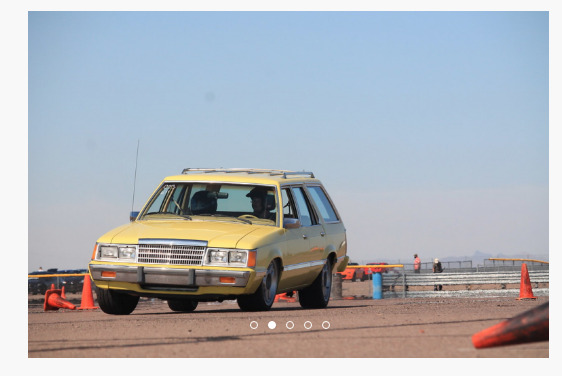
Blast from the past – Muscle & Malaise show, 2002
Vehicles mentioned on this episode!
Don’t agree, let’s agree to disagree? Come share your opinions and continue the conversation on the Break/Fix Facebook Group!
There's more to this story!
Be sure to check out the behind the scenes for this episode, filled with extras, bloopers, and other great moments not found in the final version. Become a Break/Fix VIP today by joining our Patreon.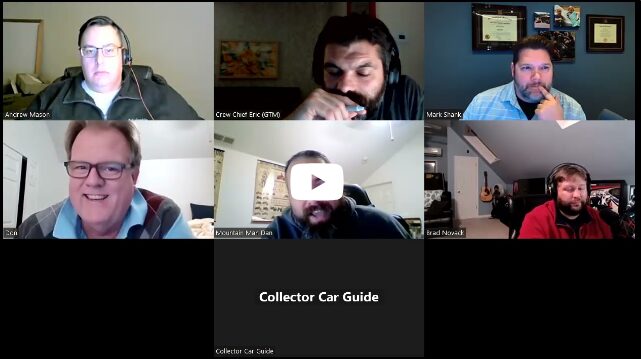
All of our BEHIND THE SCENES (BTS) Break/Fix episodes are raw and unedited, and expressly shared with the permission and consent of our guests.
Thanks to our panel of Petrol-heads!
To learn more about each of our guests, you can revisit their episodes on Break/Fix, or continue the conversation over on our Discord.
Guest Co-Host: Don Weberg
In case you missed it... be sure to check out the Break/Fix episode with our co-host. |  |  |
Guest Co-Host: Rob Parr
In case you missed it... be sure to check out the Break/Fix episode with our co-host. |  |  |
Guest Co-Host: Daniel Stauffer
In case you missed it... be sure to check out the Break/Fix episode with our co-host. |  |  |
Guest Co-Host: Mark Shank
In case you missed it... be sure to check out the Break/Fix episode with our co-host. |  |  |



